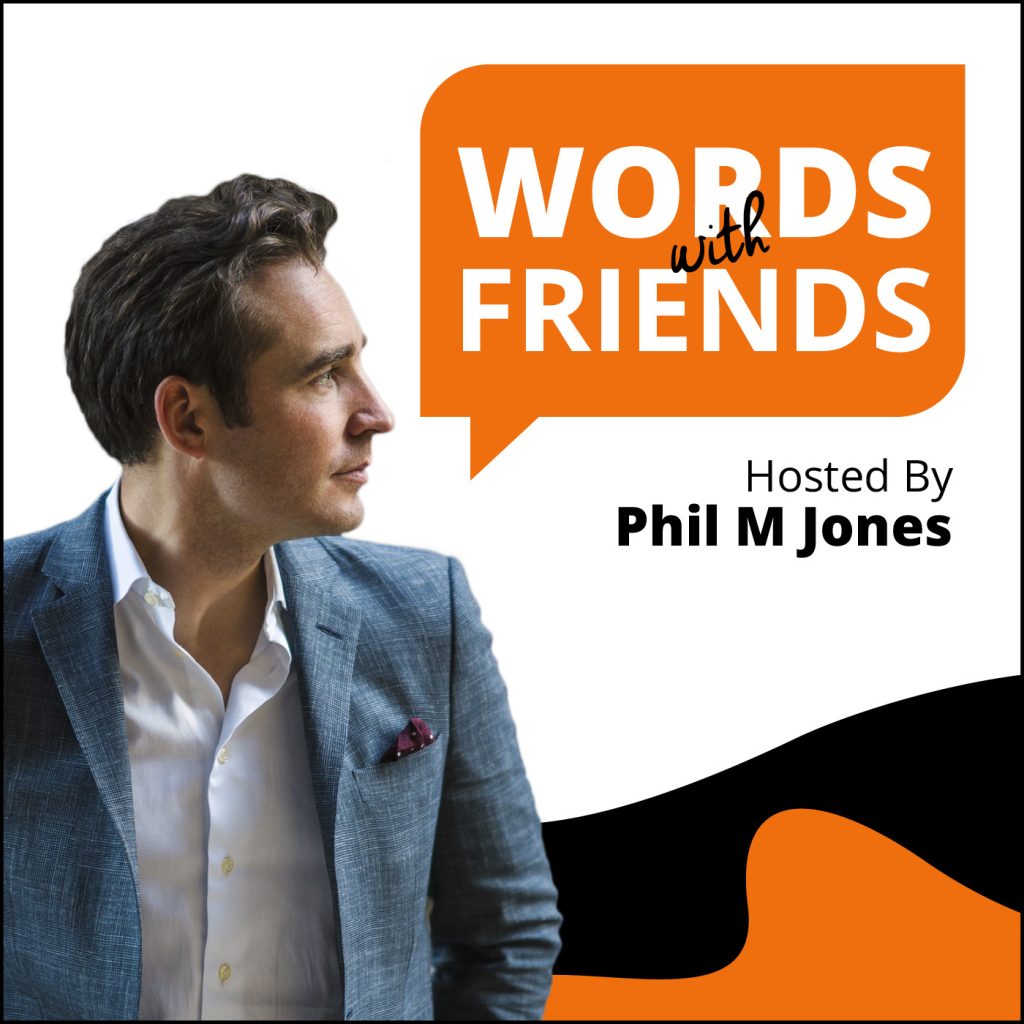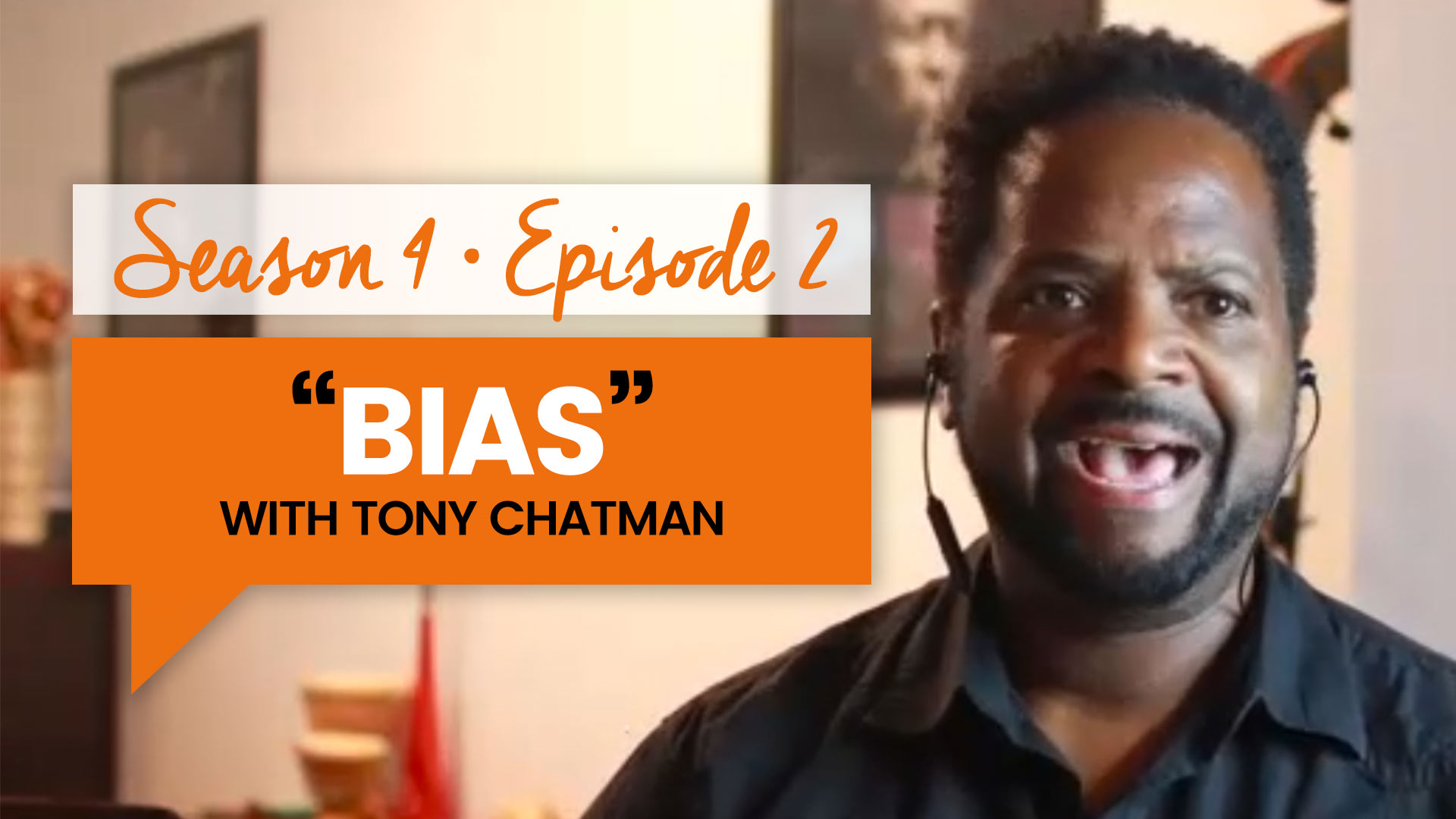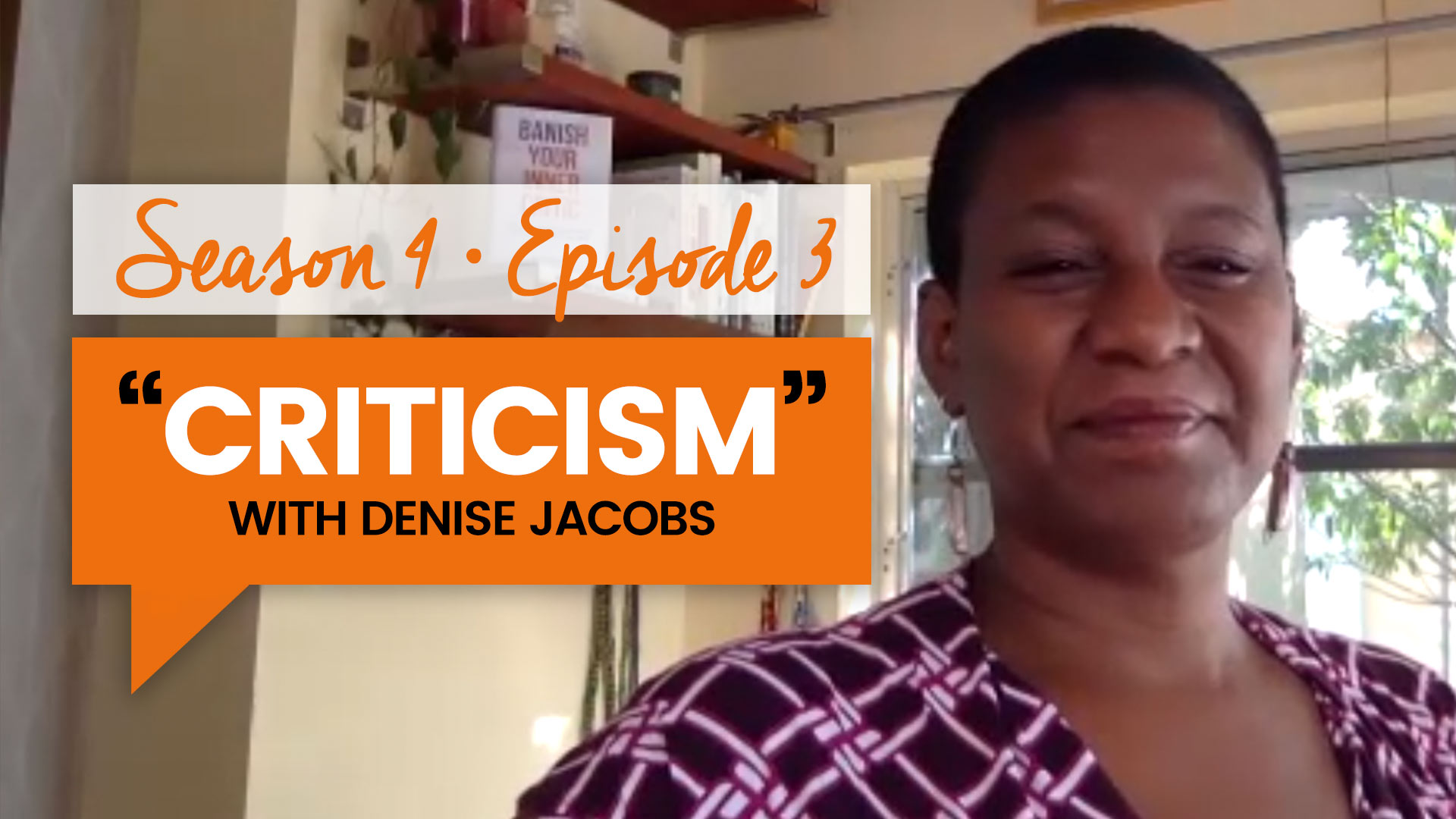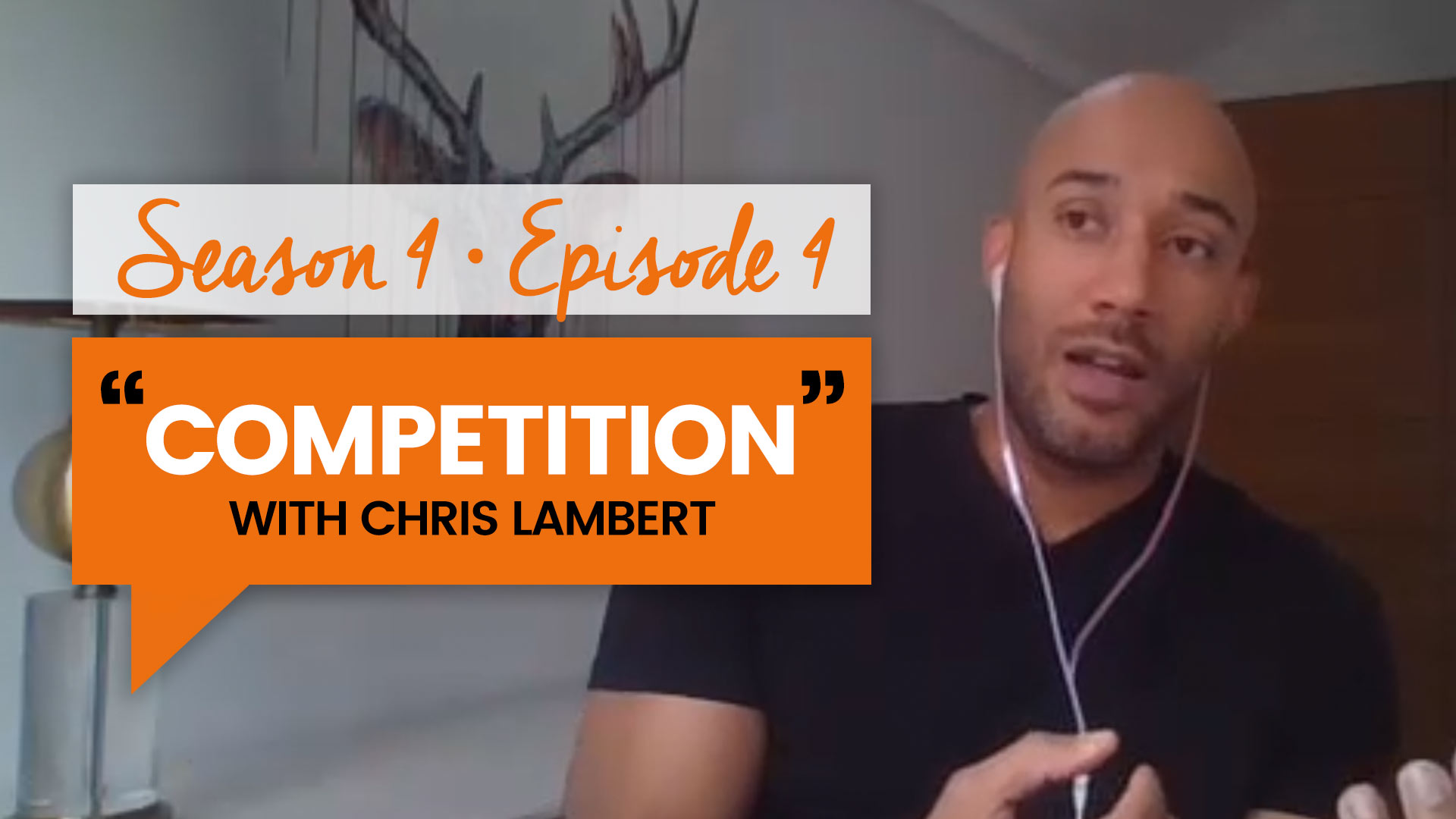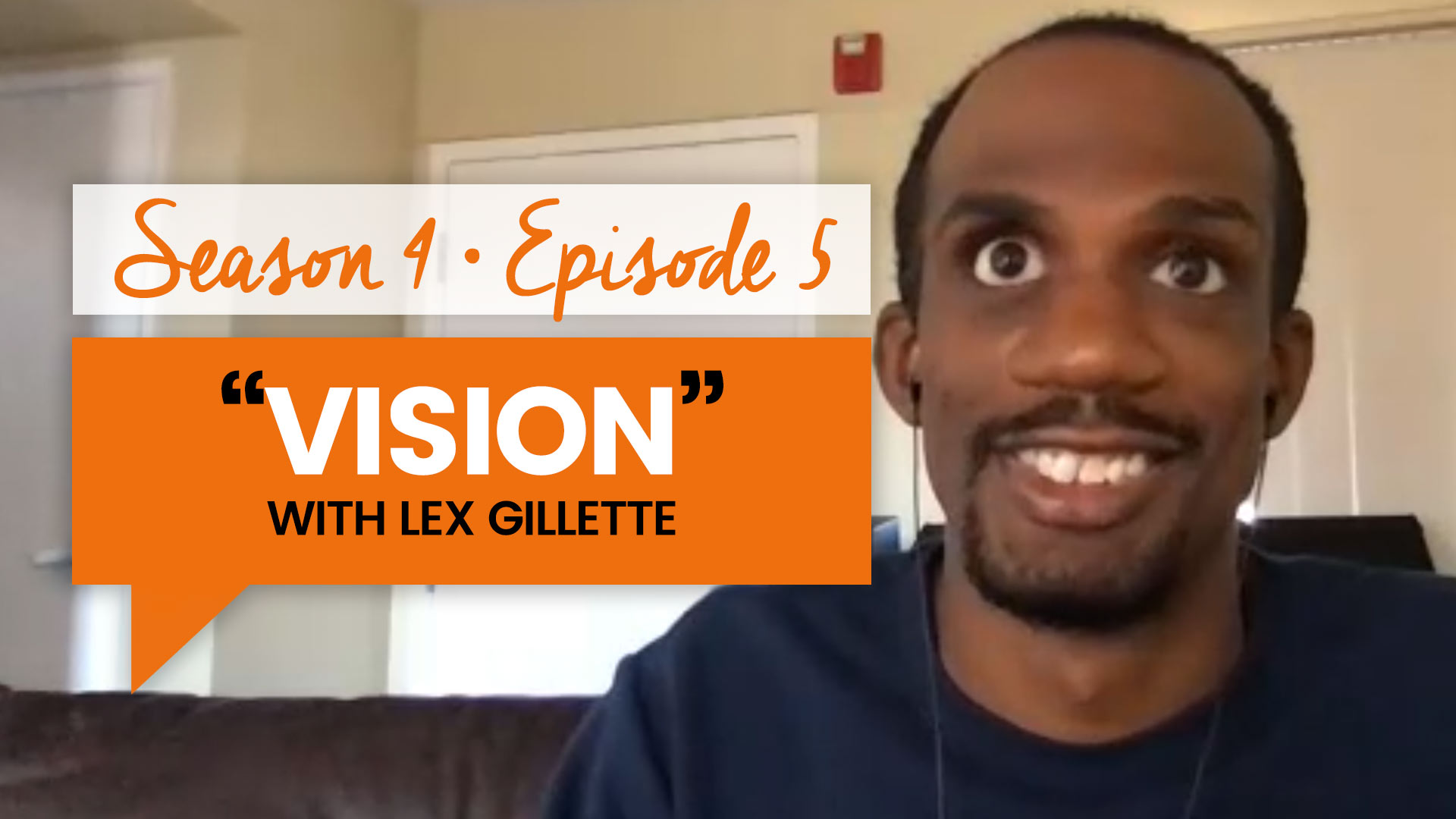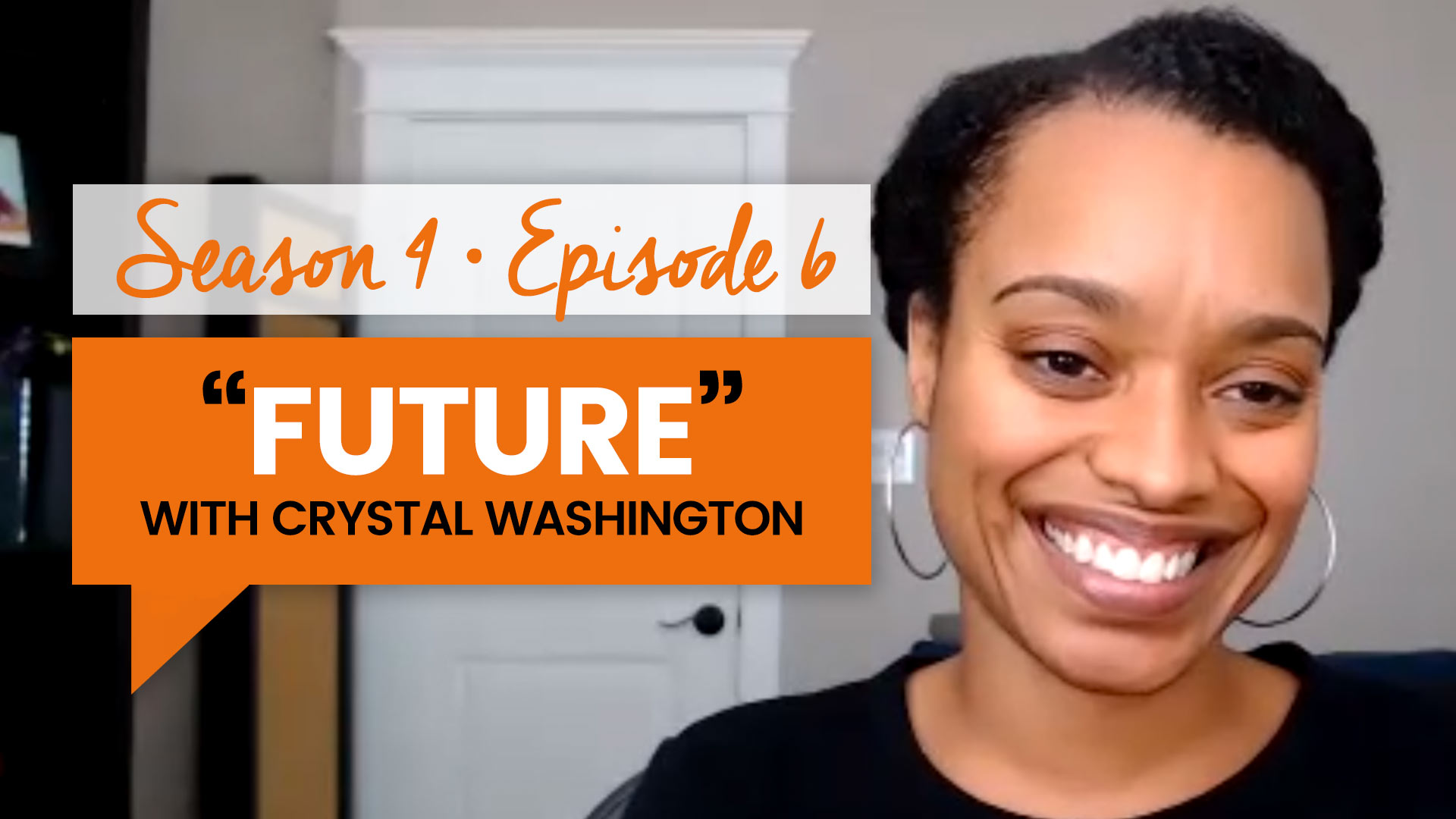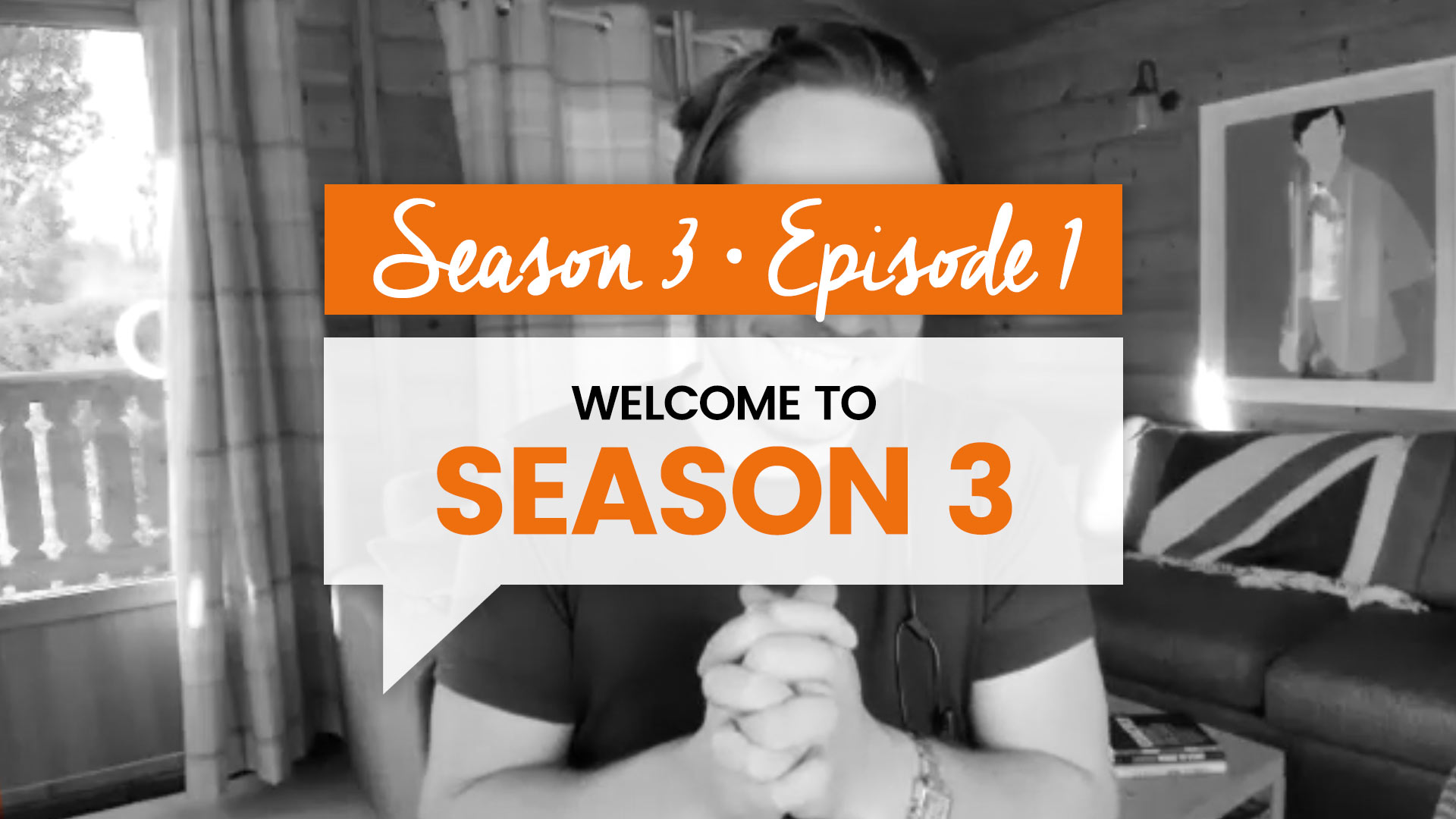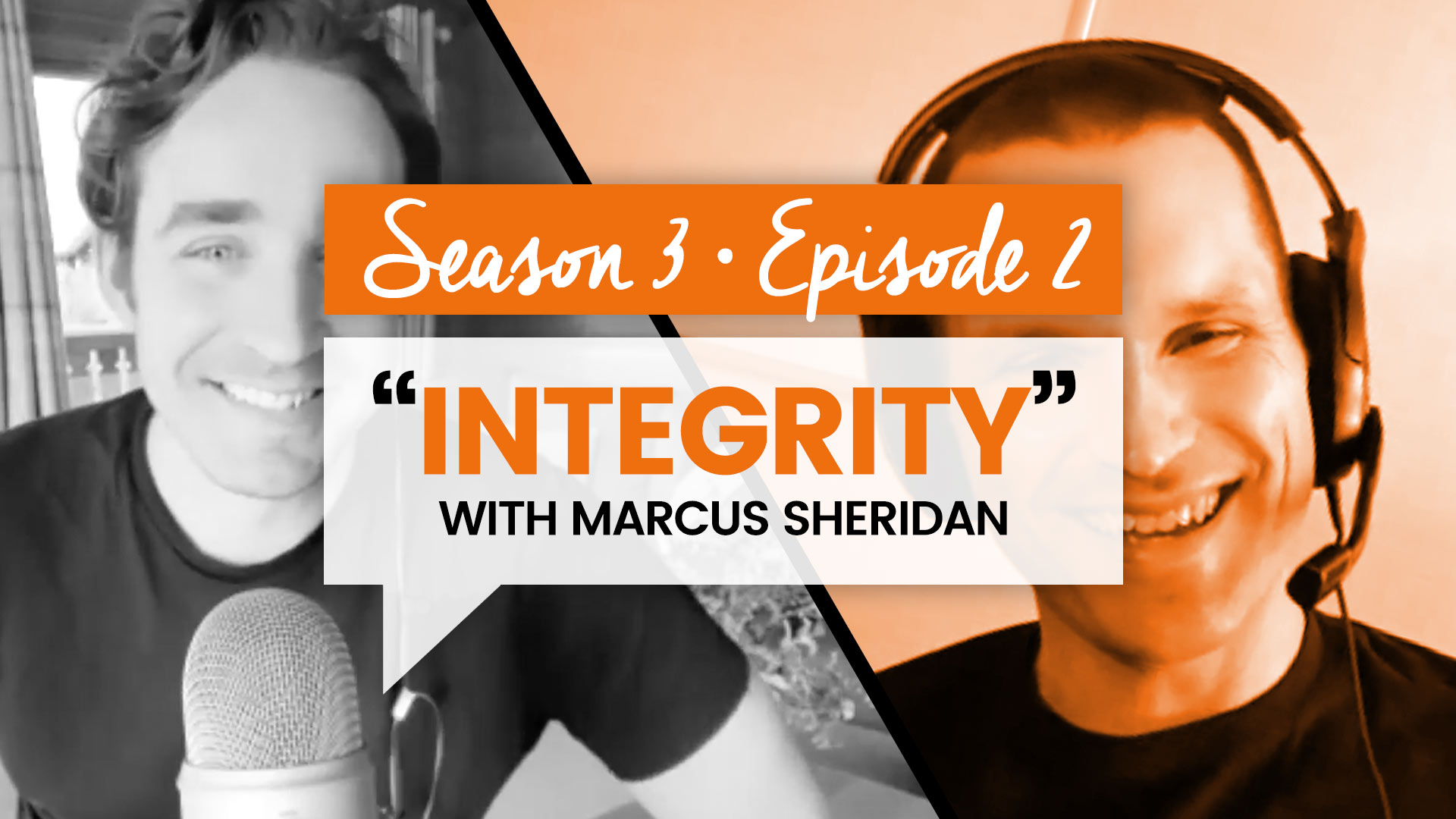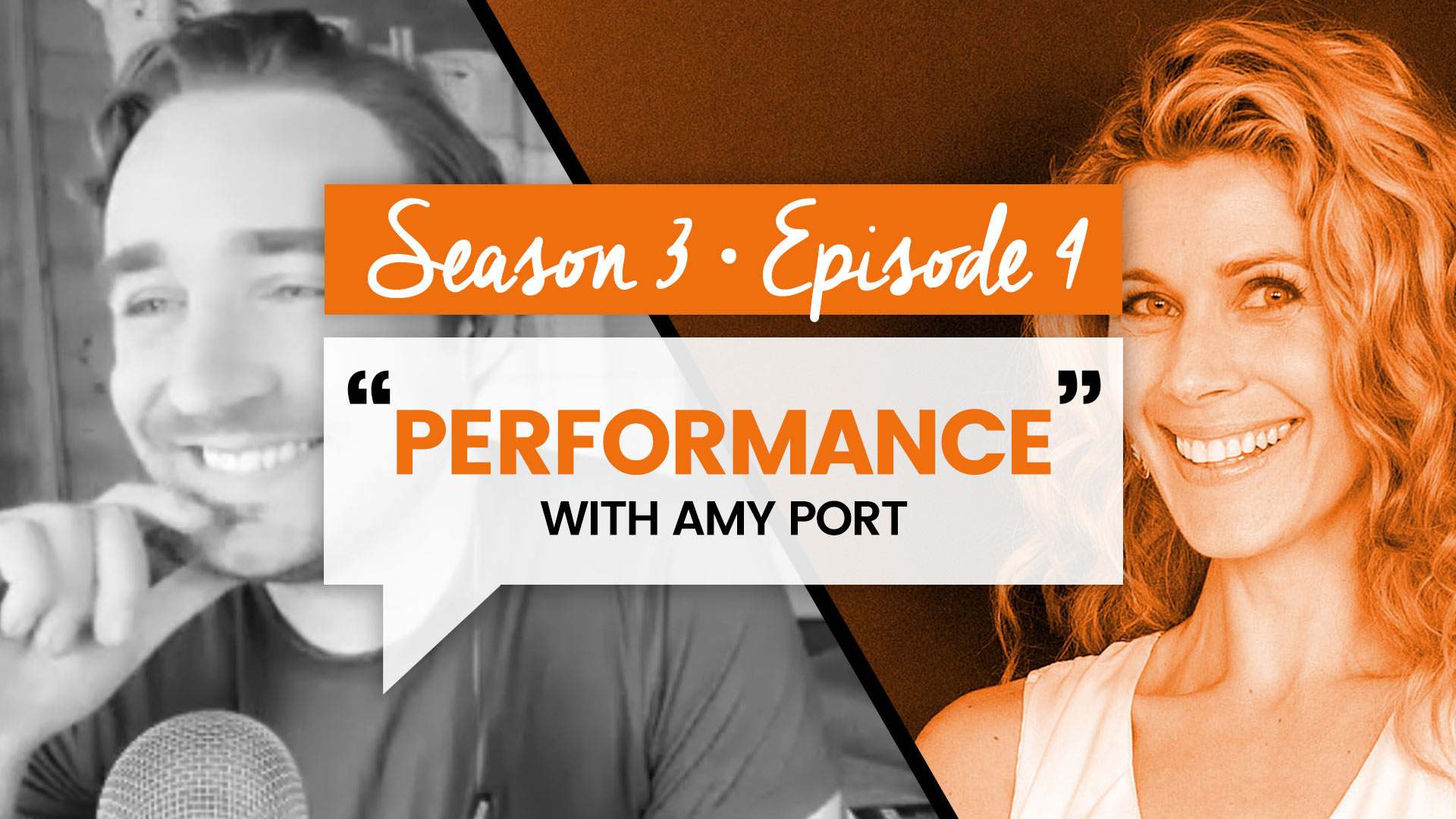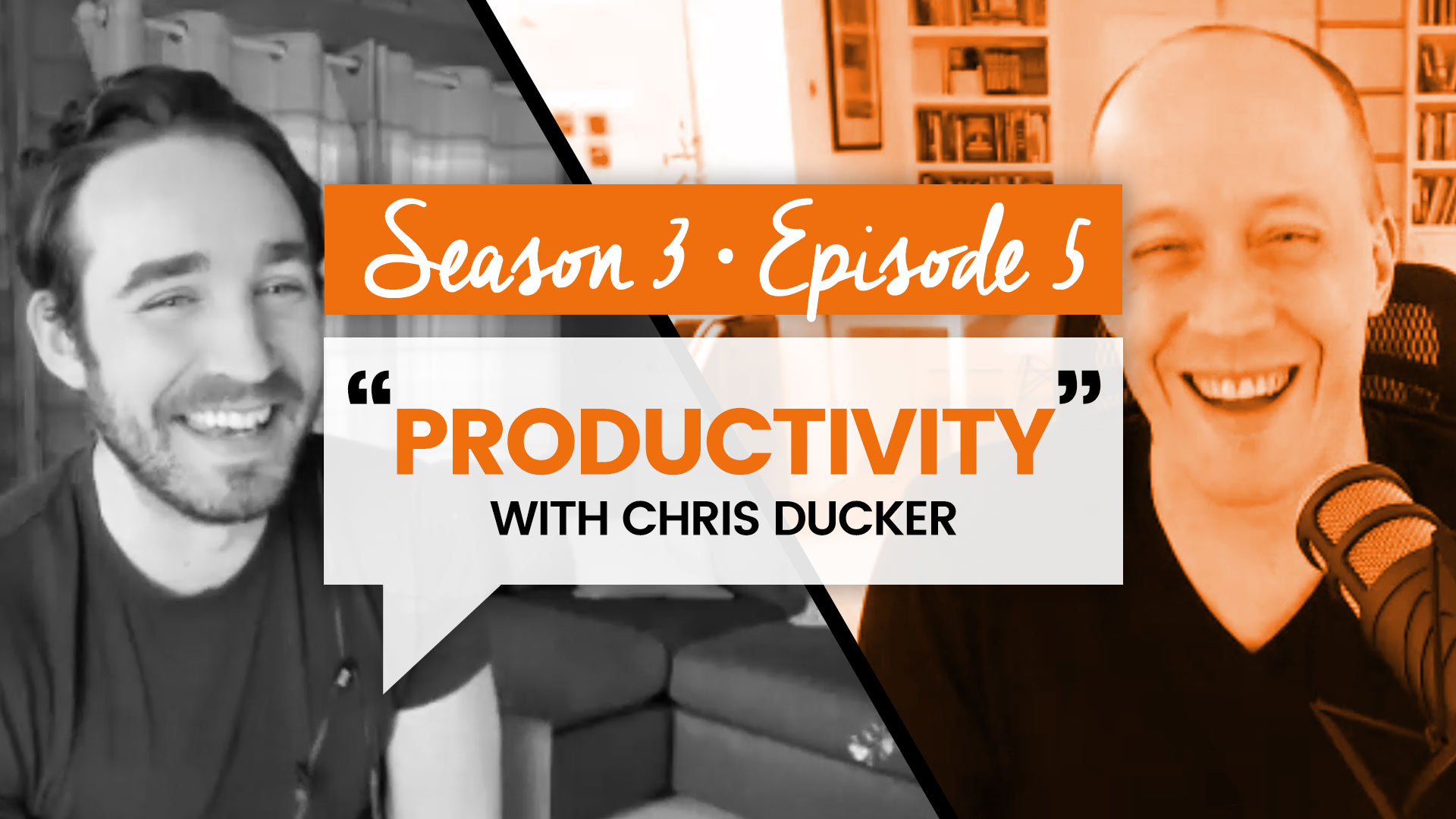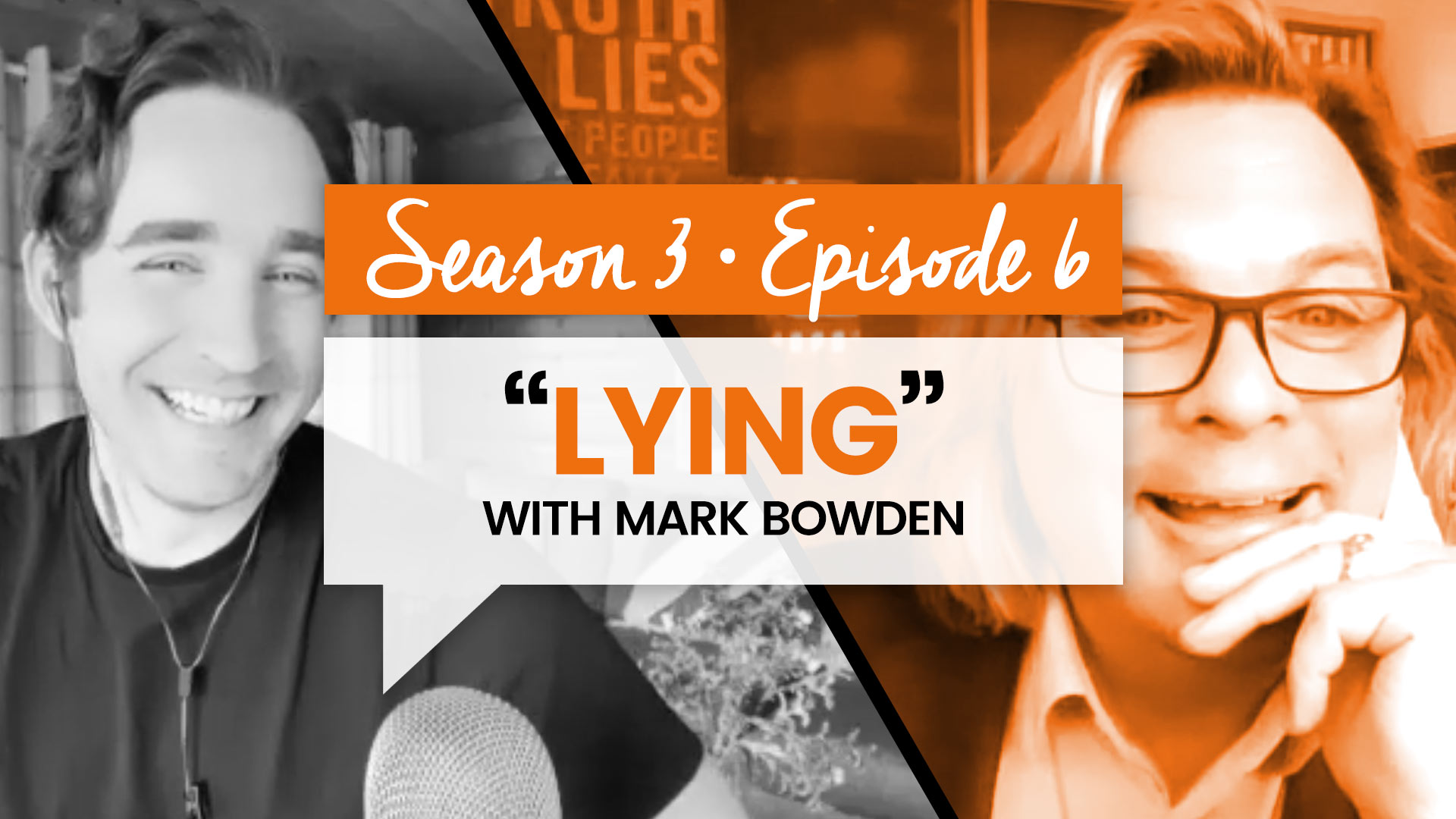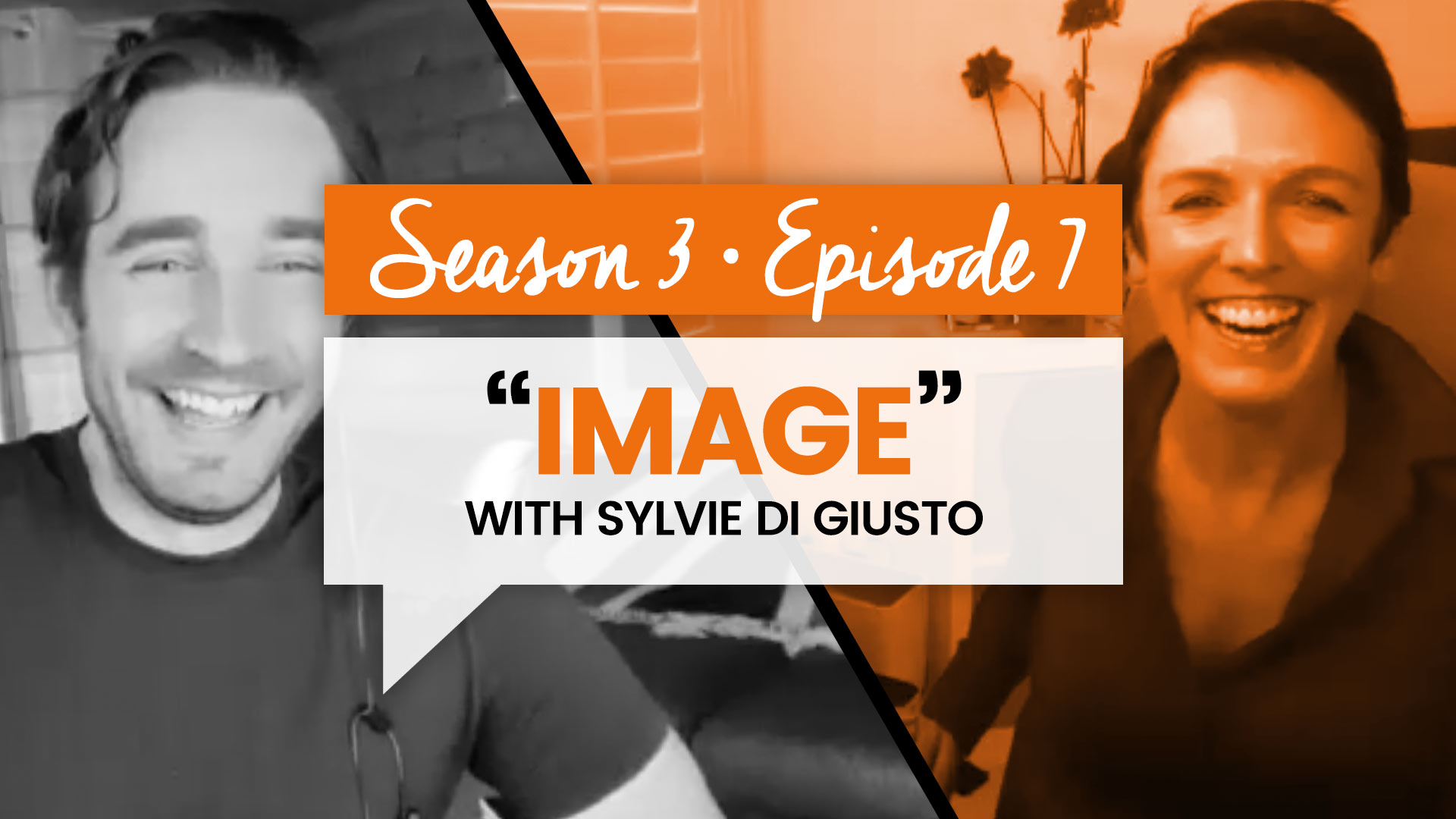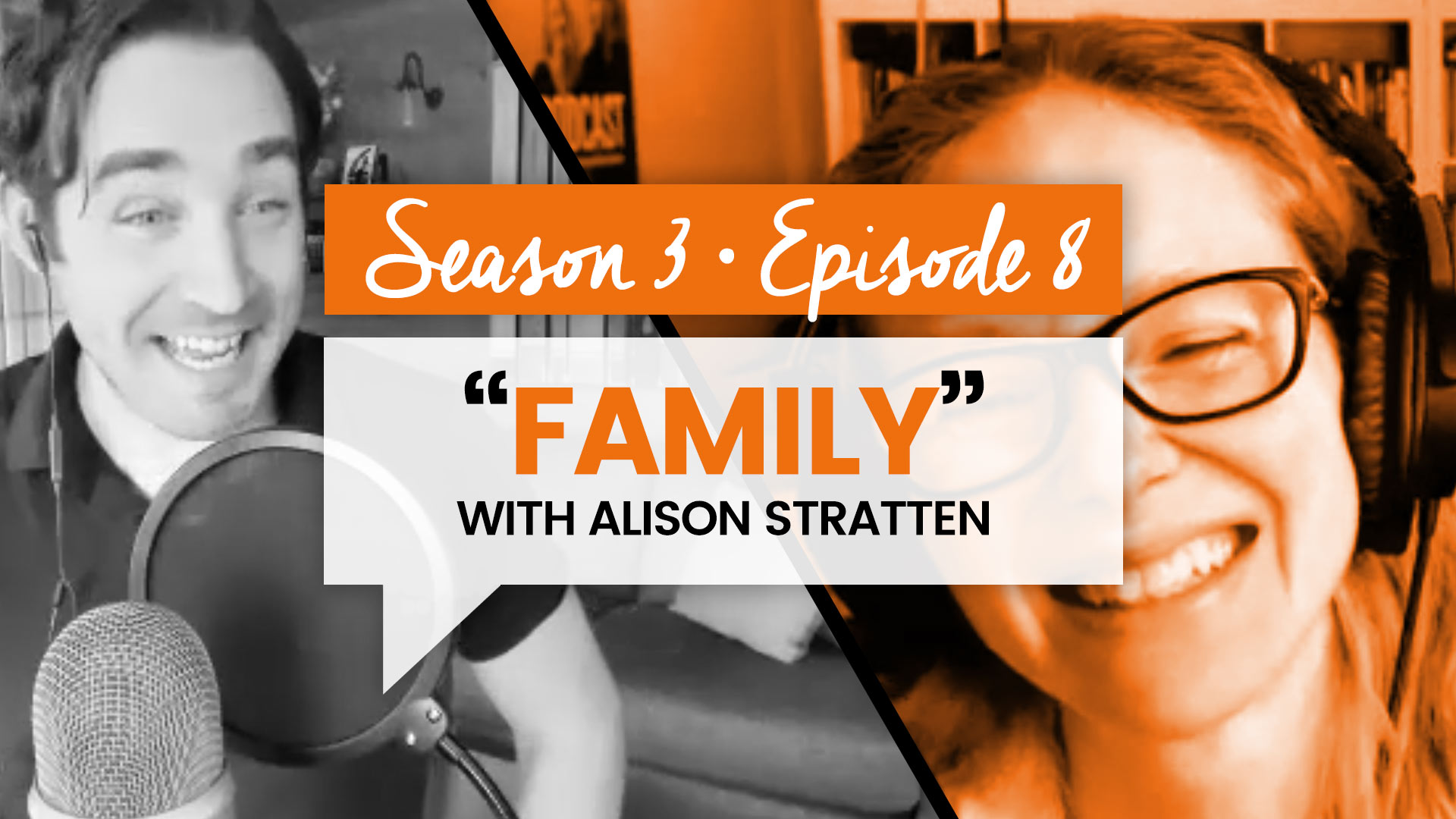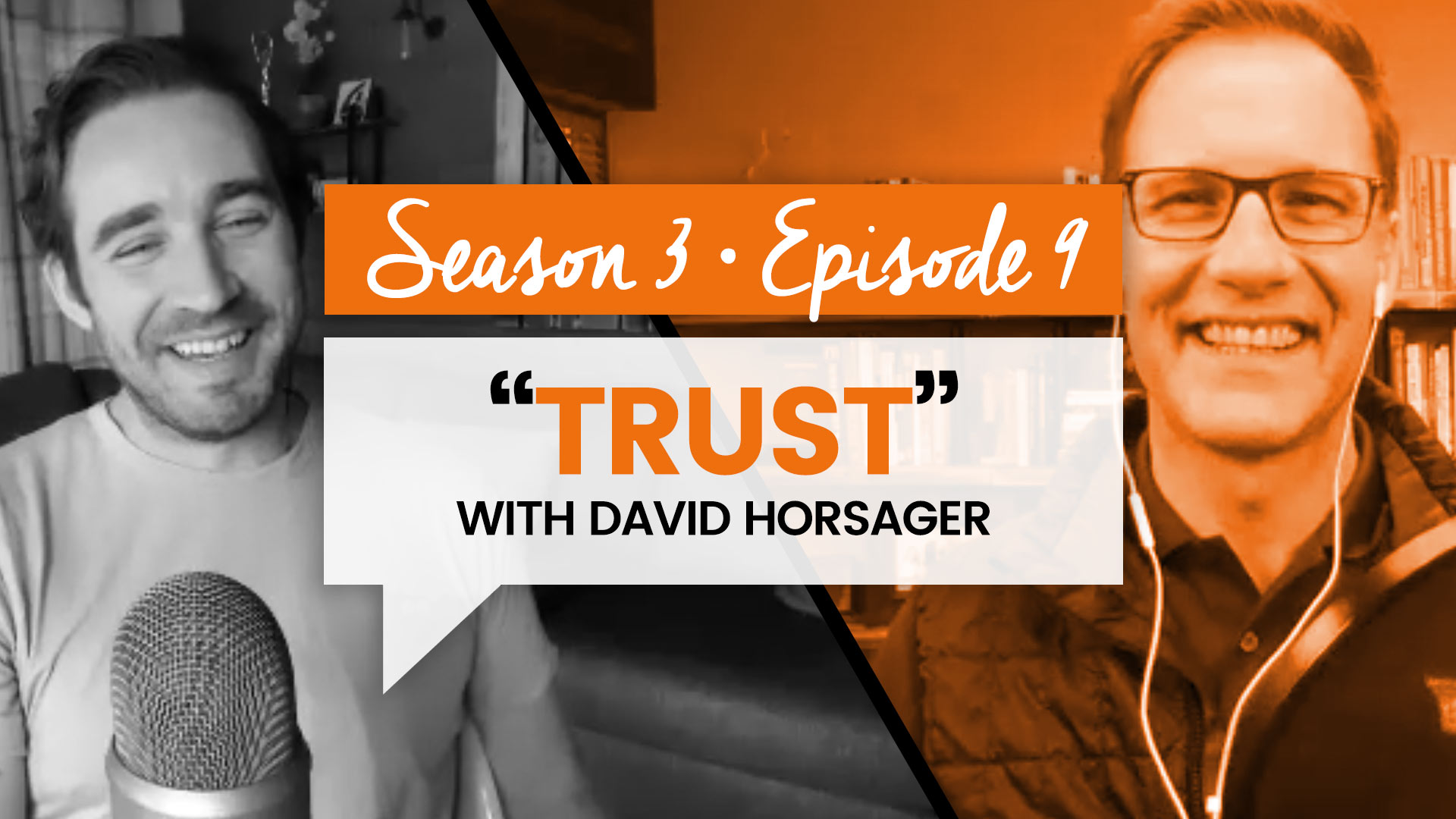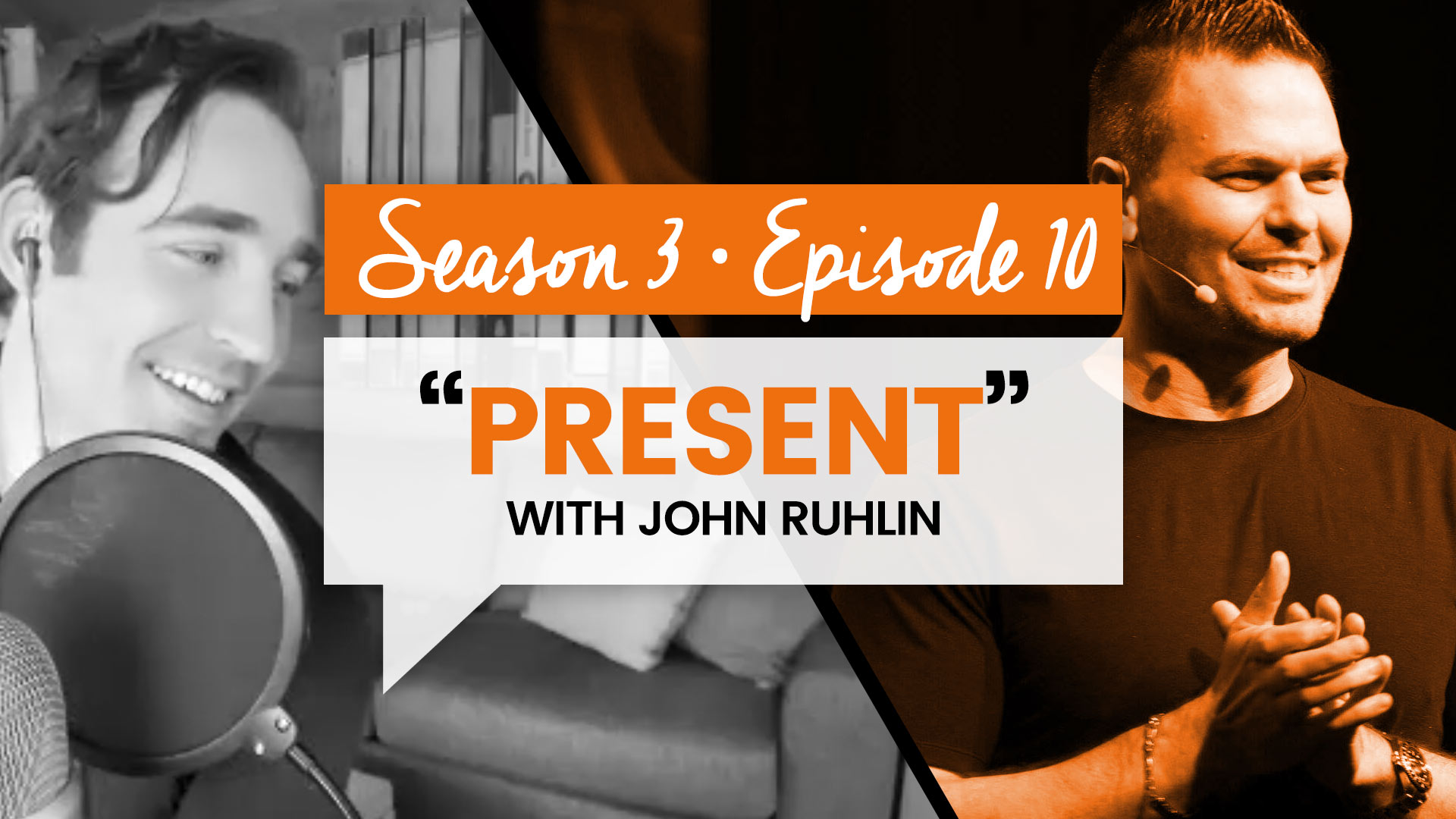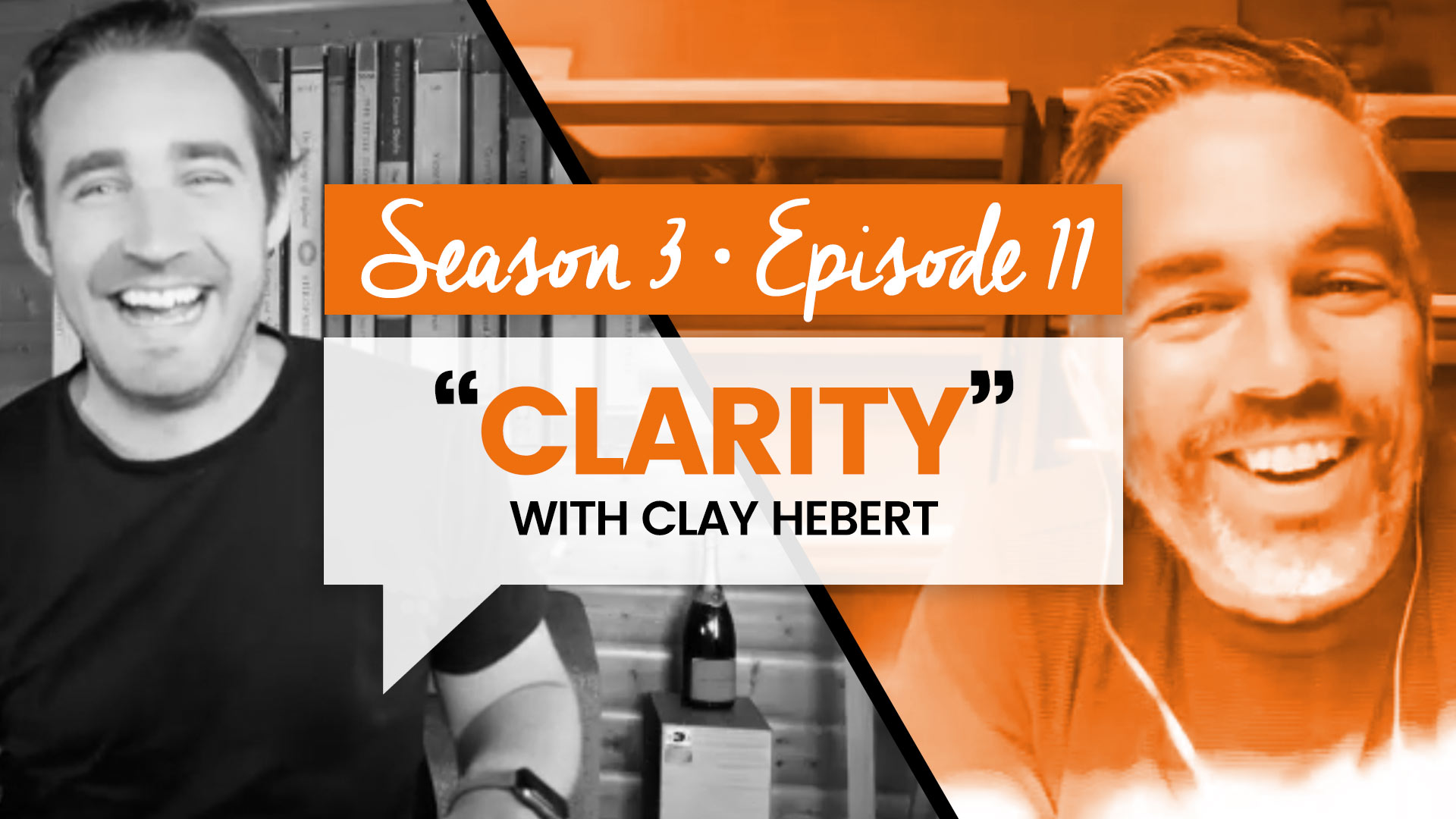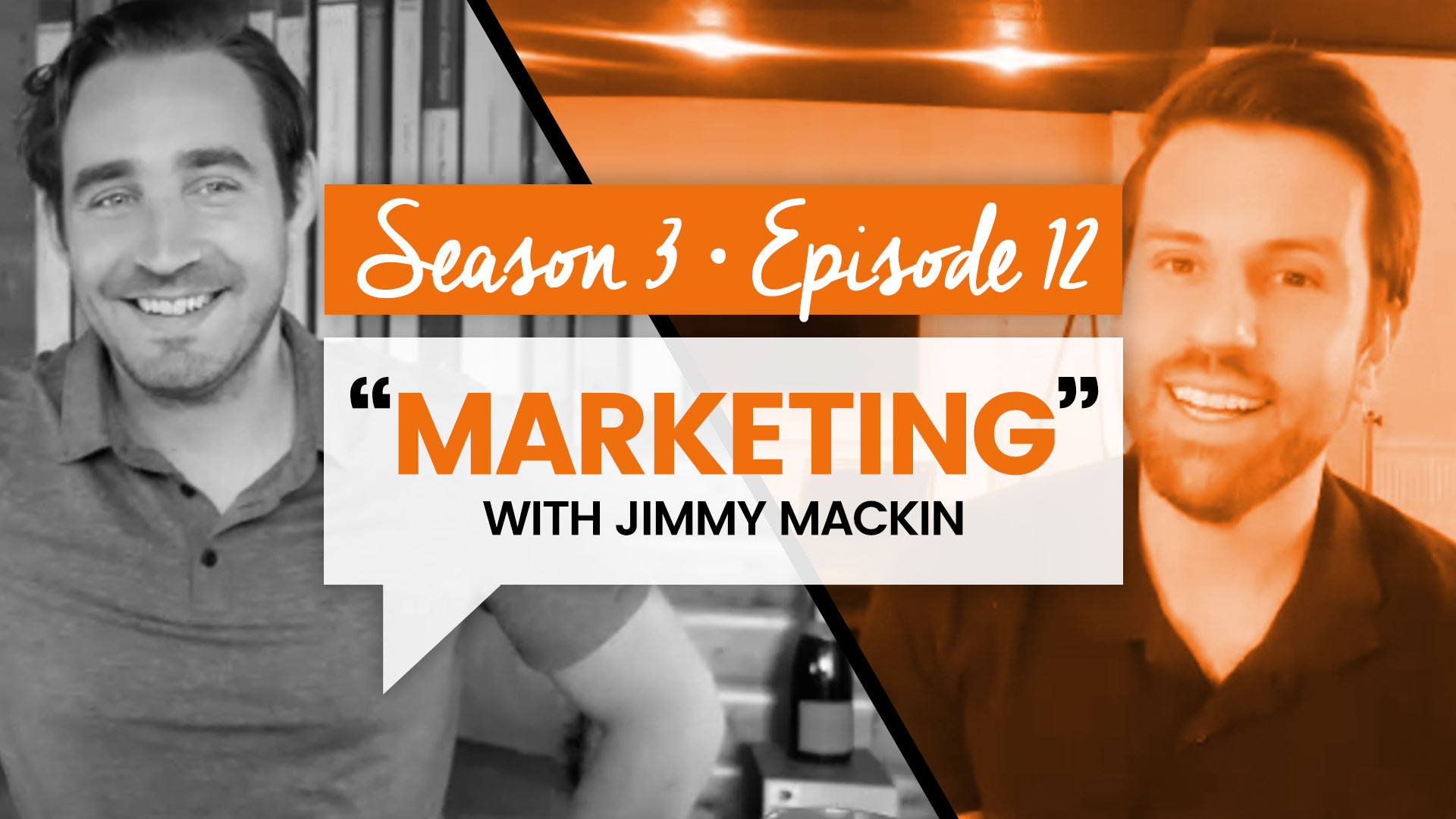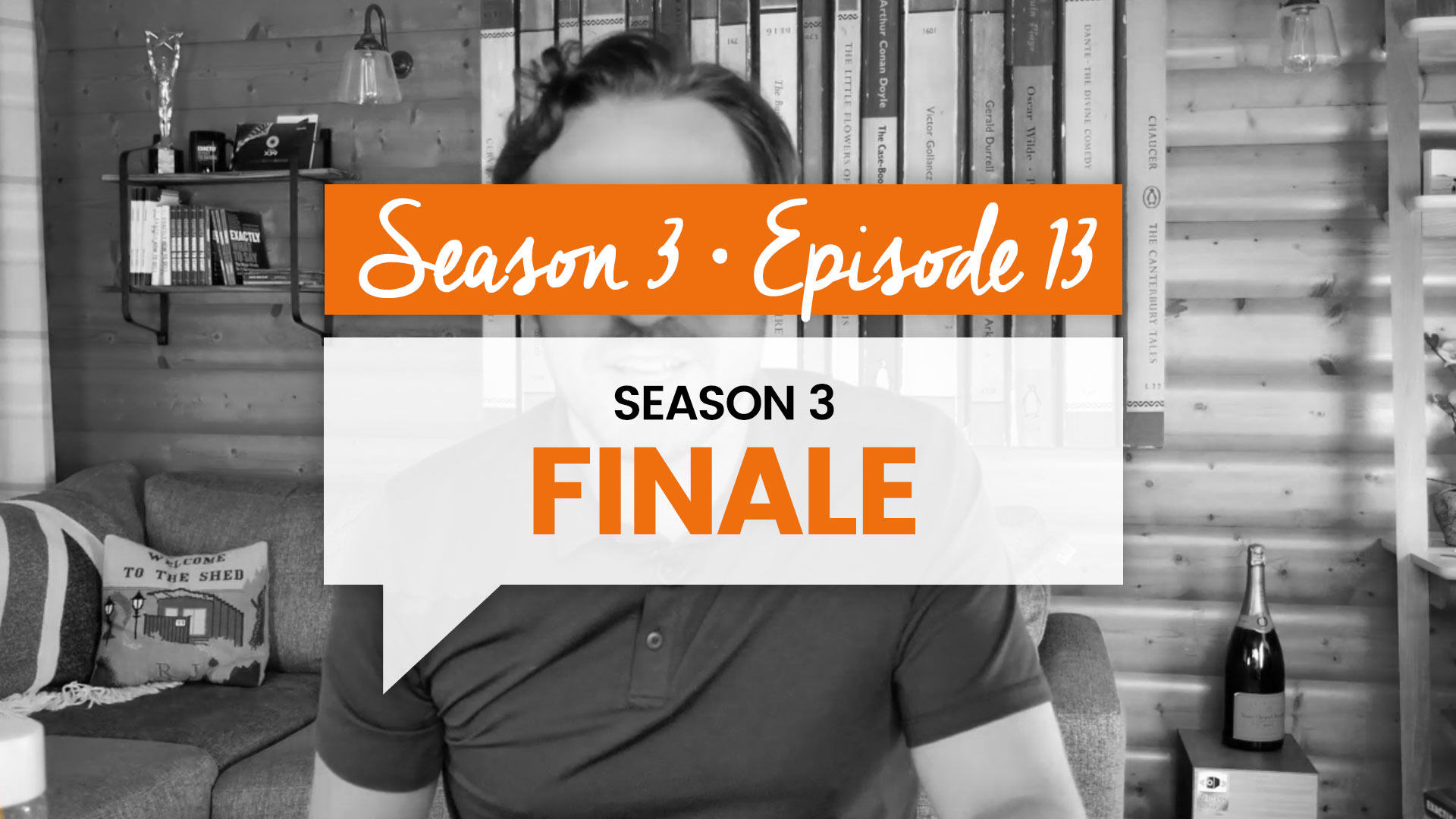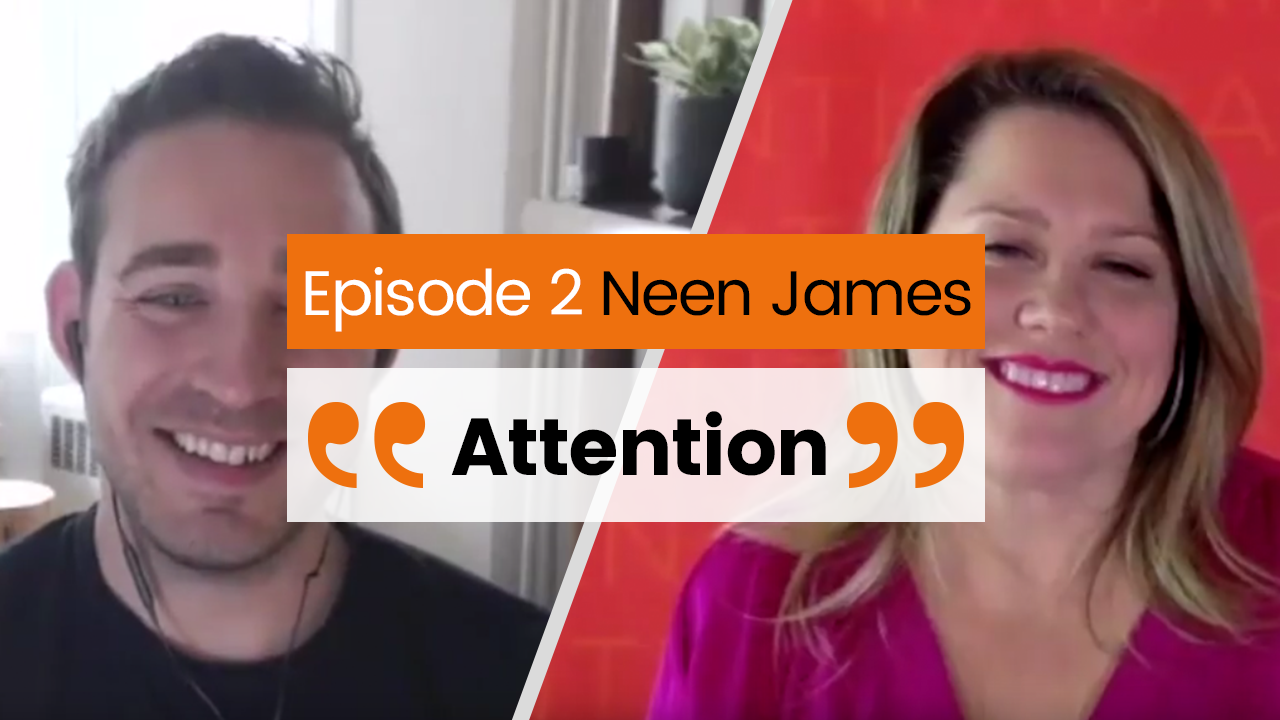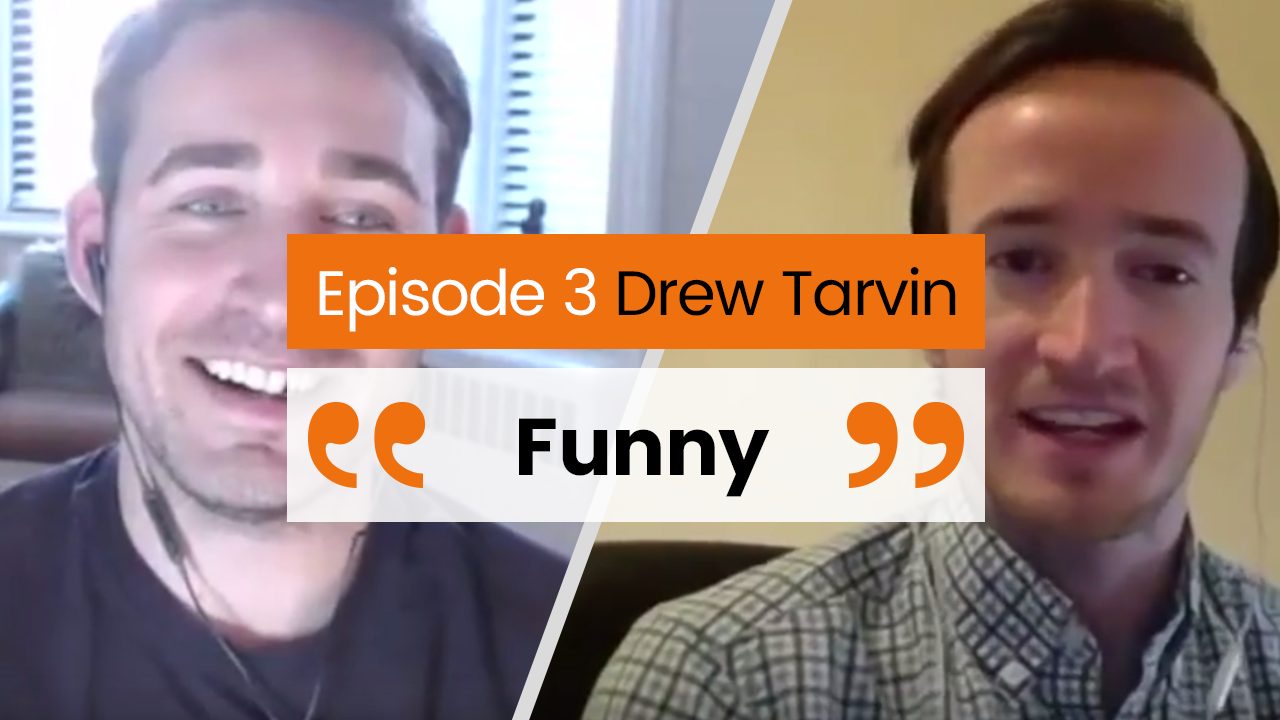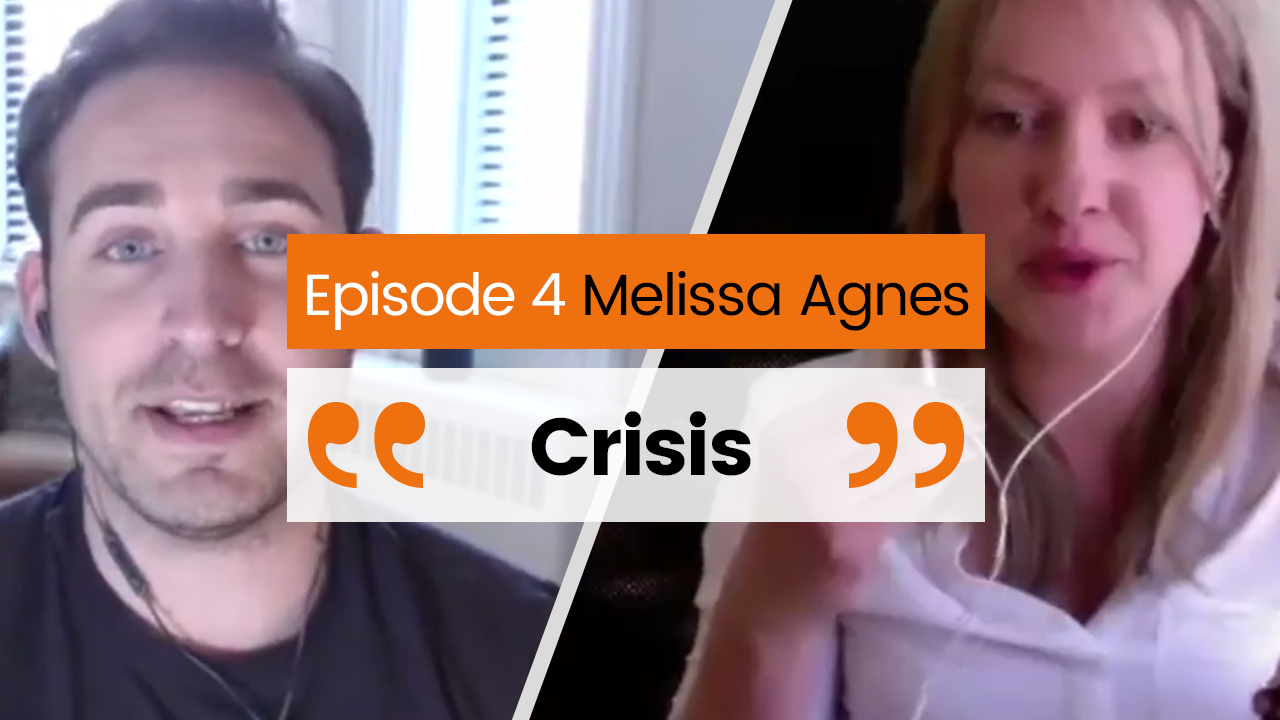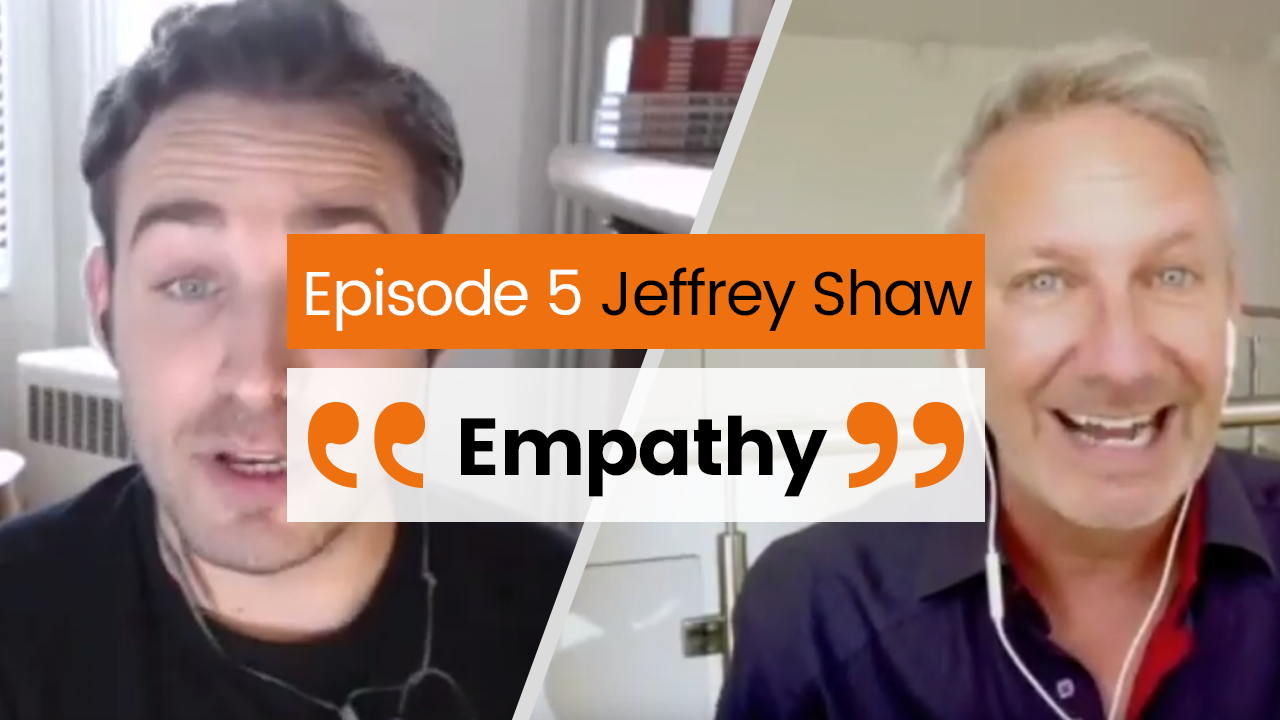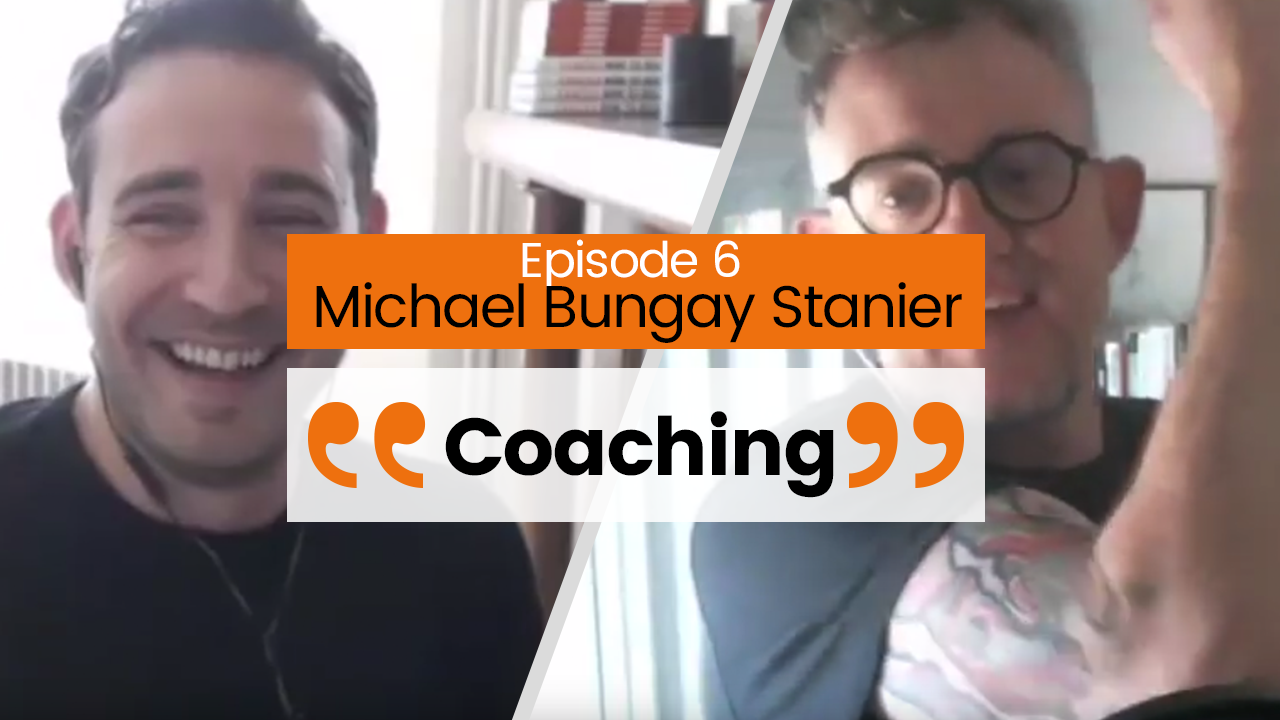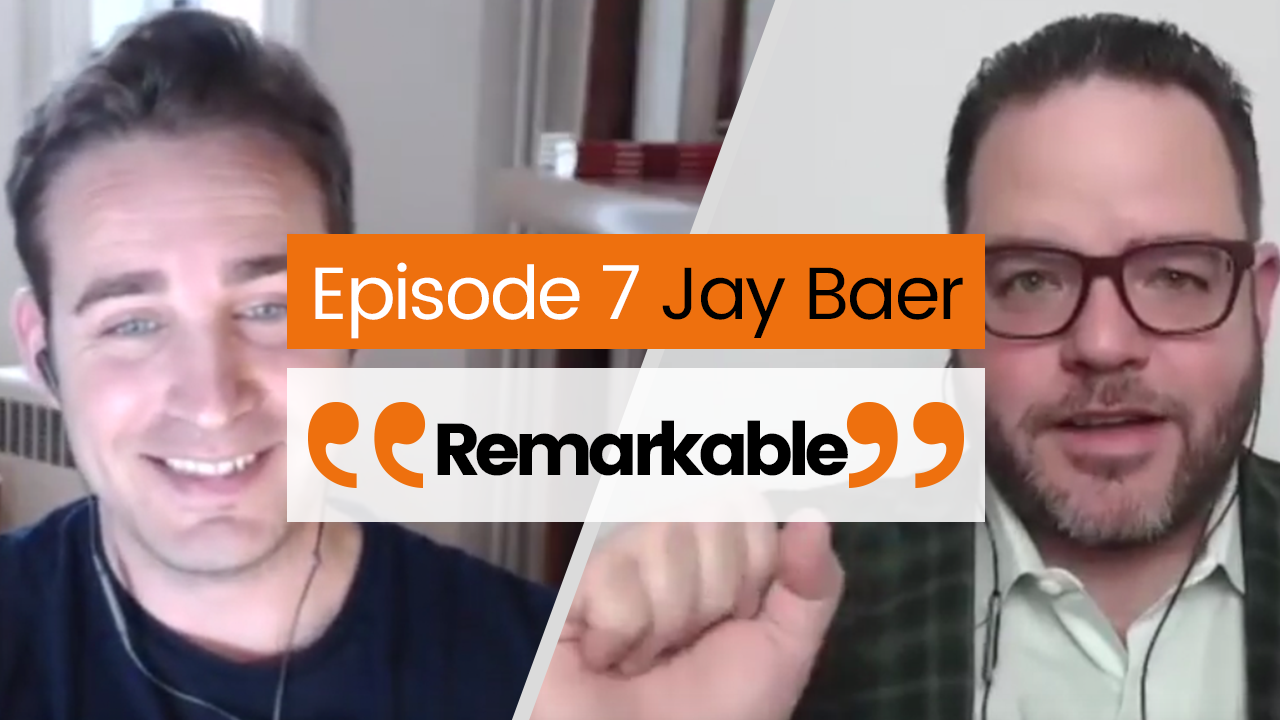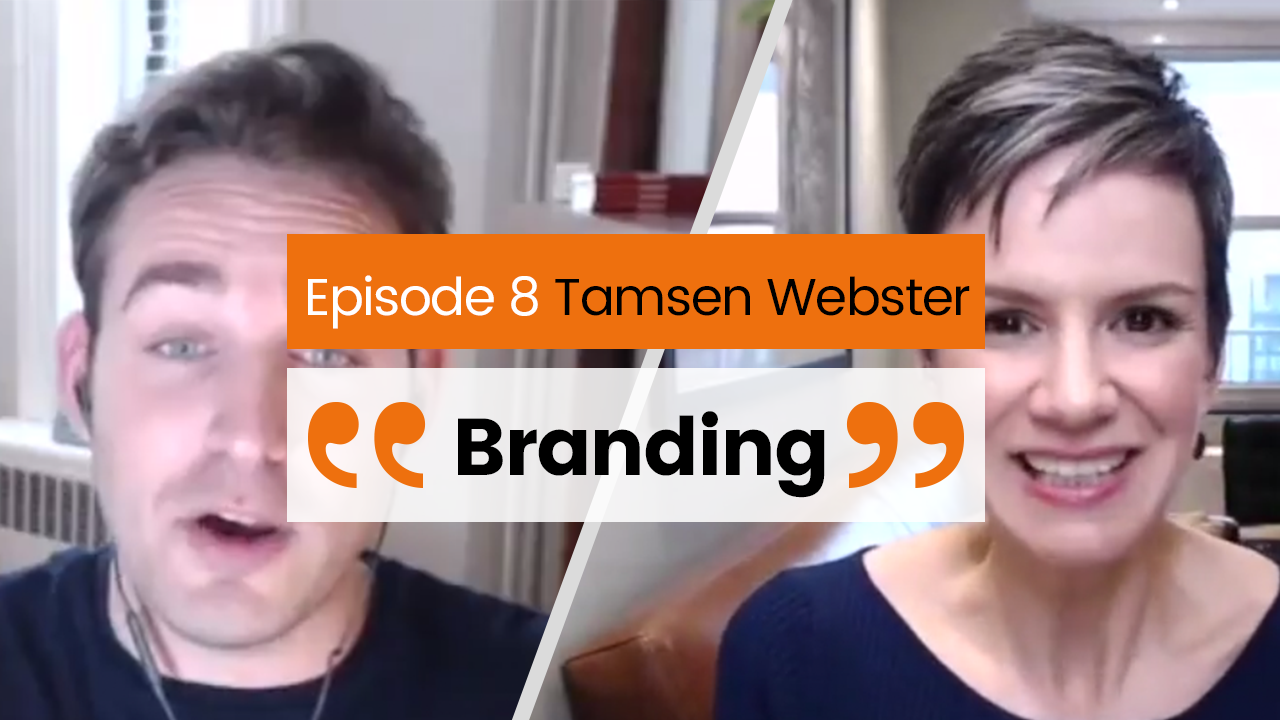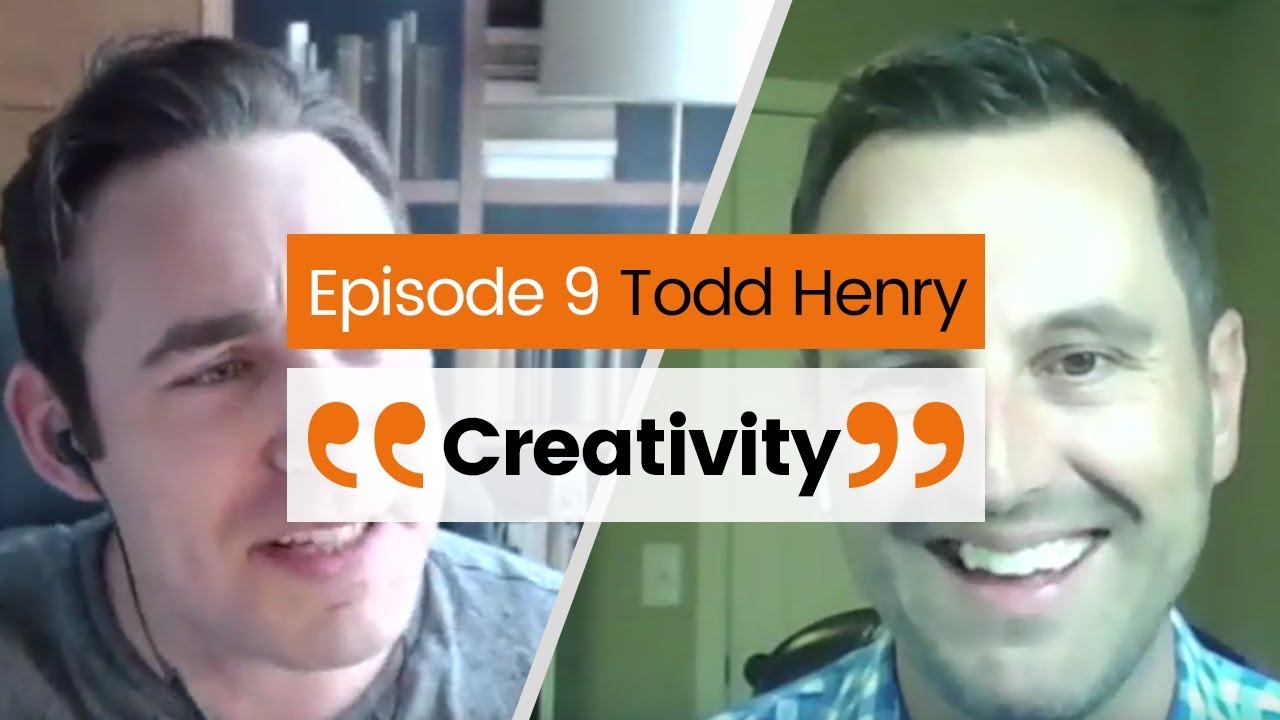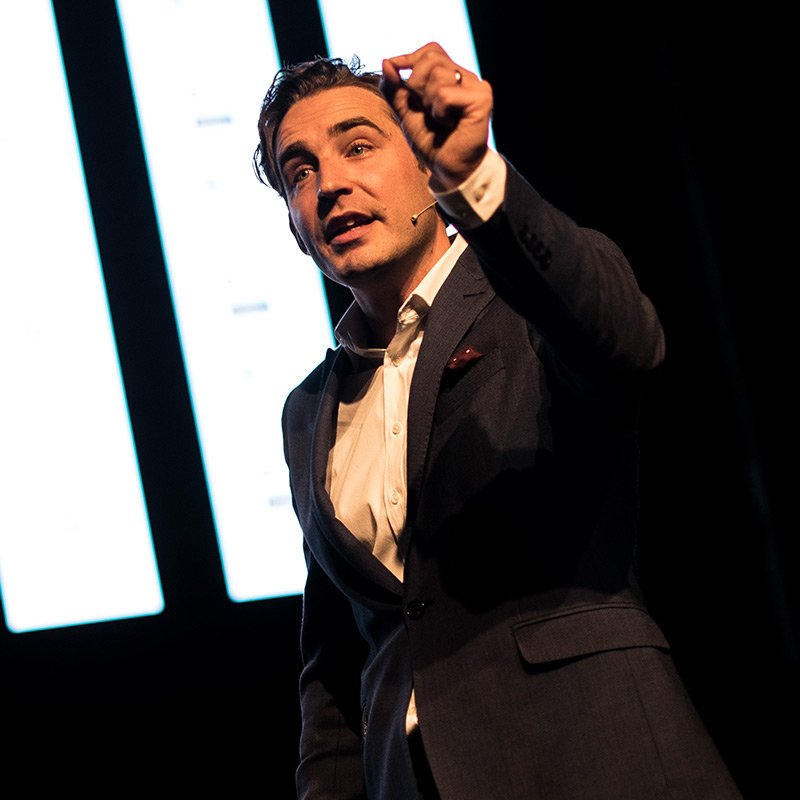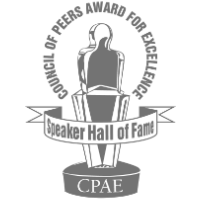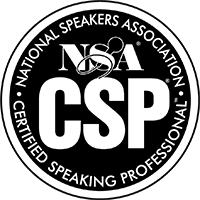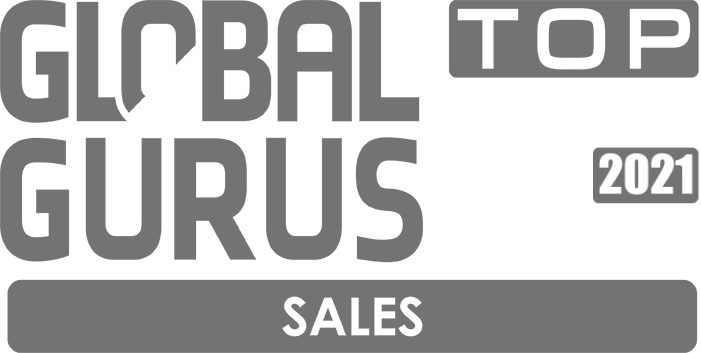Tamsen Webster: Branding
The wonderful Tamsen Webster shares her insight into the word “Branding”. Listen in on our conversation and enjoy learning from being a fly on the wall to our discussion.
Resources
Find out more about Tamsen Webster here:
- Website: www.tamsenwebster.com
- Twitter: @tamadear
- Tamsen Webster on LinkedIn
The full transcript
Phil Jones: So here we are today, late in the day on a Friday, so I know that’s not the time you’re watching this, but that’s the time that I’m speaking with one of my good friends, Tamsen. So, I have Tamsen Webster here. Hi, Tamsen!
Tamsen Webster: Hello, Phil. How are you?
Phil Jones: I’m awesome. I’m awesome.
Tamsen Webster: Awesome.
Phil Jones: What we don’t do on “Words With Friends” is, is elaborate bios of saying all the wonderful things that you’ve done in your life.
Tamsen Webster: Oh, thank goodness.
Phil Jones: I only interview cool people, so people just have to accept that you’re awesome, and then go figure it out for themselves, and we’re talking, today, about branding. “Branding” is the word, and I picked that word for you, and why do you think I might have asked Tamsen to talk about branding?
Tamsen Webster: Well I think there’s the underhanded agenda, but in a positive way, the reason I think that you asked about it. I think that the surface thing is, I think a lot of people think that, that’s what I do, and I think the reason why you asked about it is because you know I have some strong opinions about it, and how I think people kind of get it wrong, and why I think the process of branding is actually kind of broken in a lot of ways.
Phil Jones: Okay, so what does branding mean though? For anybody else listening in, what is branding in a Tamsen dictionary definition?
Tamsen Webster: Well I separate brand from branding. So my favorite of brand is that, a brand is the sum total of somebody’s experiences with you. Whether you’re an individual, an organization, whatever, your brand is what people think of when they think of you, and that comes from those interactions and experiences. Branding is the exercise through which you try to articulate what that experience is, and it’s that piece that drives me bananas.
Phil Jones: Okay, but is it not just like taking a hot iron that’s been stuck in the coals and just stamping it on the backside of a piece of livestock? Is that branding, too?
Tamsen Webster: That is. Technically yes, and it started even well before that, in the wine and champagne trade, so they could mark casks and the corks as being from a certain house. So that’s where it started, and I don’t think we’ve evolved much, frankly. I mean I’ve been in marketing for 20 years, and branding has been the defacto peak of what great marketing is supposed to be, for that whole time plus before, and the fact that we are still having the conversation, that a brand is more than a logo, tells you something’s gotta be wrong there. There’s still something that we haven’t figured out.
Phil Jones: But you go to the majority of branding agencies, and I’ve been in the small business world for quite some time, and people go spending fairly significant sums of money, still, with a branding agency, and end up with a set of brand guidelines, or a set of documents and materials, which on the face of it, through my experience, still end up being their logo shown in a variety of different ways.
Tamsen Webster: Precisely, and that’s my issue. I mean it is, and I don’t mean to undercut the incredible work that brand strategists and brand agents … I mean I’ve been one, so it’s like, yeah, I … and it wasn’t even that it was not good work, but I think what we’re trying to do with branding, it really is, in fact, captured the faults of it, or captured in that mental image we have of the hot iron being seared into something, whether that’s a cask or a cow, and the branding ends up being a couple things. Overly simplified, right? So what we’re trying to do, whether it’s in a logo, or a tagline, or a positioning statement, is that we’re trying to create something that captures in a moment all of what the brand is, and that’s not a bad thing, except so often we try to do that process on the front end. We try to create a brand that somehow captures what we wish we were, what we wish people would see us as, so it ends up being aspirational rather than anything else, and I get it.
I mean I get why people want to say, “Well, we want people to see us usually the way we would like to see us,” and then that branding ends up being the shorthand, but it’s overly simplified. Second thing is that it’s fixed, right? So the fact that there has to be re-brands is crazy to me because, if this is what you stand for but suddenly stand for something else, that doesn’t … So it’s like, ah! And then the third thing is that, that it’s also fixed in time, right? So it’s just not something that allows that slower evolution, and it’s not something that generally can adapt day-to-day, and that’s what I would see over and over again from all sides.
So I spent 15 years on the client side, where we would hire agencies to come in and try to capture the brand, and just the result … oh my goodness. I remember I worked for a museum where the director, after the third try, and failed branding exercise with him, he’s like, “Well, people just don’t get us,” and it was more like, “Okay, this is how people see you,” and he was like, “I don’t like how people see me, so no.” Through to where they would come up with great things, and then it would just never get adapted, and then on the other side, when I was a brand strategist, we would come up with a great brand, and it would still just never get adapted, and if you think about it, it makes sense.
It’s because somebody from the outside is never gonna fully capture the inside, right? So this is why that fixed piece is a problem, and the other thing, and this is what I saw when I was doing content marketing, is that a tagline does not turn into day-to-day content. Having a brand that some branding exercise produced for you is usually something that satisfies the C-suite, because the C-suite can be like, “Oh!” or the entrepreneur themselves, and they’re like, “Yes! That’s me! That’s a gorgeous logo! I love how it looks! It’s fabulous!” and then you’re like, yeah, how are you going to talk about that thing every day?
Phil Jones: Give me some examples to this as well, because I have a theory I kind of get it. You must’ve bumped into some things or observed some stuff that you can tell us about, either through changing a name or two, or not, but what is some of the stuff you’ve seen?
Tamsen Webster: Sure. So I mean, for a little while in the mid 2000s, the three word brand tagline was a huge thing, and I did a lot of work in higher education. So just imagine something that, they would come up with a tagline that was like, “Diverse! Student-centered! Urban!”
Phil Jones: Woo!
Tamsen Webster: Woo hoo! Yeah, exactly. What always killed me about higher education was just, listen, if you’re not diverse and student-centered out of the gate, what the hell are you doing? That is not the thing that’s gonna separate you from somebody else. But the struggle would be then, how do you talk about, if … The only thing that’s really been defined across the organization is the output of what you do. “Well, we’re diverse, and we’re student-centered, and we’re urban.” That really limits … when I have to have an interaction with somebody on social media, and they’re mad at the organization because the picture of the theater on the student materials that we sent to them doesn’t actually belong to us, a true story by the way … That’s for another day. When someone’s upset about that, you can’t be just like, “But we’re urban and student-centered!”
So that’s my own example, but people may be familiar with the … and it’s still the current tagline of JetBlue Airlines. Now I hesitate to use JetBlue because it’s not like you and I, and those of us in our profession, travel way more than the average bear, but it’s still a great example because the tagline for JetBlue is, “You above all,” right? And it’s great, and it really does in a lot of ways, it does capture the spirit and the ethos of …
Phil Jones: I’m tingling. Just thinking about it, it’s like a warm fuzzy feeling for me.
Tamsen Webster: But, you know what? There has been at least two times where I’ve seen … and I know these people, so I will protect theirs names to protect the innocent. One of them, I saw a post, she put it up on Facebook, and she was legit pissed that she had tried … Now, here’s the situation. If you’ve ever booked a flight on JetBlue, you, or any of your watchers, or listeners, you know that, to book the flight, you have to say, at least twice, “I am not bringing a pet onboard,” and even when you check in, they come back and they’re like, “Do you want to bring your pet?” and you’re like, skip, skip, skip, skip, skip.
So there’s no question that, A, they allow pets onboard, B, there’s a fee for pets and, C, they give you plenty of opportunities to acknowledge, accept, and pay that fee. Just a little background. So this woman I know, not a close friend mind you but, she was like, “JetBlue, I’m done with you! What the hell is this, ‘You above all’?” And I come to find out what she was so mad about was the fact that she tried to sneak her dog on the plane.
Phil Jones: Okay!
Tamsen Webster: Yeah, so she was like, “Well it’s ridiculous that I have to pay more for my dog than my own fare, and nobody ever told me that!” and then they escorted her off the plane, so she could go pay for it, and then she was like, “And then you guys have the gall to blame me for the fact that we’re late?”, and I’m going, I’m sorry. I have no patience for you whatsoever, but it came back to, “But your brand is ‘You above all,’” and I’m kind of like, yeah, it doesn’t mean that “You above all,” applies if you’re a jackass! So, that’s what I mean when it comes to day to day interaction, what’s the gate agent supposed to do when someone flings a tagline back in your face? And it’s like, “Well, ‘You above all!’” and they’re kind of like, yeah but, how many times were you told that there was a fee for the freaking dog? So that’s the kind of thing where it’s like … and JetBlue’s is a good tagline, and they have that
Phil Jones: Right. It’s a great example, though, of looking at something that, on the face of it in a creative meeting, or in 95 times out of 100, it actually serves, and it’s also why the definition then needs to be drawn deeper, right? Because I think, even in that tagline, where they’re saying, “you above anybody else”, the “you” is actually a collective you, as I read it.
Tamsen Webster: Yes!
Phil Jones: Not an individual you. It’s not saying you, it’s saying you as in all of you.
Tamsen Webster: Our passengers! Yes. Our passengers are the most important thing, and there’s a ton about most people’s experiences with JetBlue that would back that up, so it’s the opposite of United’s “Fly the friendly skies,” which is laughable, and so that’s the other piece that can happen with branding, is that people pick something that’s so aspirational, as to be patently untrue.
Phil Jones: Okay.
Tamsen Webster: It should be “Fly the friendly skies *if you’re a platinum member,” right?
Phil Jones: It’s not always true. I’m a platinum member, as I’m sure that you … so I don’t even know if that would wash. Let’s just take this somewhere else as well, and you mentioned rebranding earlier on, and lots of people find themselves at points within their life where they want to go through some form of significant change. Now you’re somebody who’s gone through a number of significant changes as your career has progressed. If somebody sat, listening in right now, thinking they want to rebrand themselves so that other people might see them differently, what might bring to that, or lessons from big companies that people could apply to themselves as human beings?
Tamsen Webster: To answer that, I think it’s important to understand one other aspect of what I think branding actually gets wrong, and it’s that branding … Think of it this way. Branding is trying to capture a narrative with a single story. Let me back up. So a narrative, of course, is this longer, broader idea. It’s an unfinished story. It’s a story that’s still happening. It’s a story that’s kind of collaboratively built. Something like the American dream is considered to be an example of the narrative, this kind of general idea that if you come here, you work hard enough, that you can create opportunities for yourself that aren’t available at other places.
Now, does every story support that? No, but there are plenty of individual stories, everything from Carnegie to you, that would support that idea of what the American dream is all about, but I don’t think anyone could say, “I’m sorry! You can only tell the story of the American dream with one single story. That’s it. That’s all you get. You have to tell the same story, over and over again.” You would think that, that’s ridiculous, but yet if we go back to that definition of brand that I love, not branding but brand, as the sum total of our experiences, we realize that a brand really is this ongoing collaborative narrative.
Phil Jones: It’s like organic, right? It’s alive.
Tamsen Webster: Oh, absolutely.
Phil Jones: It’s a living thing.
Tamsen Webster: It’s absolutely a living thing, and so the thing is that, so often what we’re trying to do with branding is, is kind of crystallize the narrative with a single story, and instead of doing that, I mean what we’re trying to do is capture … You know that image of the snail eating its own tail? That, to me, is what branding does. Well we’re gonna try to tell a story that captures the story, of the story, of our story, and you’re like, it just doesn’t make any sense, and so what we don’t look at is what drives the narrative in the first place. Why is it that the company, or you as a person, operates the way that you do? What is it that you’re trying to achieve? How do you see the world in a way that’s different from other people? What are the core beliefs and truths about the world as you see it? Because, those are the things that actually create the narrative.
They’re like the codes in the computer system that tell it how to behave, and that’s what we need to be looking at, and so this is … my roundabout way of answering your question is that, if somebody wants to rebrand, what I’ve seen is that the most effective ways to do that is to come back and figure that piece out, like what are the pieces that have always been there? Because even if you kind of … and you said, I’ve jumped around a lot, on paper, as a career. I went from being a management consultant, to working . . . to planning exhibitions in museums, to being the head of marketing in a performing arts college, to doing fundraising communications at Harvard Medical School, to brand strategist, and other stuff.
And so on paper, if I tried to have a job interview if I only talked about the nature of the job, and less about what I did in those jobs, then they would just be like, “You’re a crazy job hopper,” but what I was always able to do is to say, “What I love to help an organization do is, that I love to help an organization close the gap between the potential that they want and the reality that they see,” and because I believe that every organization already has the means to do that within it, that there’s already the approaches to do that, and my skillset happens to be, let’s figure out how do we articulate that because words are really the currency of ideas. We have to be able to take those things, and talk about them, in order for people to get it.
So then I could explain that, and I could show how that piece, while those pieces of my operating system showed up in job, after job, after job, then people could look at it and go, “Oh!” The core of me didn’t change. It was just, how did it manifest in different ways? So when you’re trying to rebrand, what you’re really trying to do … I mean, I think what people do that’s a mistake is, they just try to change the story, and a better approach to rebranding is to say, how does what makes me, or us, me or us, how can that manifest differently given a changed context? I think that’s looking at it from a completely different direction. It’s not, how do I change the story? It’s, how do I show up differently, given the same ingredients, in this new situation that I’m trying to be in?
Phil Jones: Okay, so it’s like following Harry Potter’s life.
Tamsen Webster: Tell me more about that, but I like where you’re going!
Phil Jones: Well you watch it, and it is the same book, it’s the same story as such, but in terms of how that character has evolved from the very first book through to where you see him in the later pieces, you’ve seen somebody where the core of it is clearly made of the same stuff, but it demands to be different at two different ends.
Tamsen Webster: Absolutely.
Phil Jones: One is like a monster slaying rockstar hero, and at the other end of is a timid little boy in glasses who couldn’t talk himself out of a paper bag, right?
Tamsen Webster: Right.
Phil Jones: But you’ve seen that same type of ingredients grow, and I didn’t plan on that analogy coming out, but you know I like to jump to analogies sometimes.
Tamsen Webster: It’s a good one.
Phil Jones: Yeah. I think it kind of works. I just want to go somewhere else, though, with brand, because I think this is showing up in the world more and more right now. If you want to Thailand, or you go yourself on a vacation trip, you’ll see a lot of the best brands in the world replicated, and there are …
Tamsen Webster: Yeah. Gucci with one or three C’s instead of two.
Phil Jones: Yeah, and now not even with the three C’s, et cetera. In fact the level of counterfeit has rose, and rose, and rose, and rose to a point where actually they’ve become, in some ways, unrecognizable from each other.
Tamsen Webster: Yep.
Phil Jones: Now one of the worries that I see is, people start showing up in the world, particularly with small business, micro-business, personal brands, those kind of things, is that people are looking out into the world for success criteria, where success might leave clues, and thinking what they should be doing is, is replica, or copycat, or what worked for them, this should work for me, too, and the result of which is, my newsfeed on social media is dozens of websites that look somewhere near identical, with a story that sounds somewhere near exactly the same, and in many scenarios with copy pasted content, so what does Tamsen Webster think about that kind of stuff, and what could somebody listening in think about if they are entering into this space? How do they decipher between, something worked well for somebody else and they can learn from it, and how do I make it me and not a fake?
Tamsen Webster: So first thing I would say about copies and replica, it’s another one of those things if we stand back and look at it, and we go, “Well that just doesn’t make any sense,” because by definition, copies lose resolution, right?
Phil Jones: I love that!
Tamsen Webster: I mean it’s just, the more you copy something, the more fuzzed out it gets, right? The less detail you get on it, and so that’s always been a mantra in my head. It’s just, copies lose resolution. It’s the original that’s always sharpest. The original always has most definition and the most detail. The reason why you can’t really, truly … I mean consumer good, of course, but when it comes to people and ideas, the reason why you can fully replicate is because it goes back to that operating code. You can’t replicate that. That operating system, in my mind, is in fact unique to each person, each organization, and so when you’re trying to figure out, okay, well what can I learn from other people, and what about me is in play? I think what ends up happening is, we take some of the advice that’s out there about find your why, and I have a huge amount of respect for Simon Sinek and that idea, but I think what’s ended up happening is that people … it’s much like branding, it’s ended up being this oversimplification where people take that to be, what’s your singular why? What is your single passion? What’s your single purpose?
And when that happens, you can start to see why it makes sense why you get these copycats, because you’re like, “Oh, this person clearly solves the same problem I do, and they seem to be successful, so let me just copy what they’re doing,” but again, they’re losing the resolution of why they’re doing it in that way, given what those things are, and that’s not something you can necessarily see from the outside. You might be able to reverse engineer it based on someone’s behavior. Over time, you can start to, to quote Shakespeare, “The truth will out.”
Over time, you will start to see the patterns of what drives people, organizations, to do what they do and the way that they do it. I’m sure you’ve known people, and I’m sure your listeners have known people where, over time somebody who thought was brilliant and awesome, over time they never evolved, let’s say. You discovered that what was really interesting, was there was just no depth there. It was great for the moment, but there wasn’t any actual extra thinking there, versus other people, who I’m sure you’ve seen over time, where they just keep doing more and more interesting things, and sometimes it’s in really unexpected directions, but you can always go back and look at it, and go, “That makes sense.”
So for people who are out there trying to say, “Well, how do I actually go out, and be different, and find my own way?” Of course, look at those people who kind of share some of your whys, and while you’re getting early thinking on this, I’m kind of the belief that we don’t have one why. Right now, I’m somewhere between we’ve got three to five, and I haven’t nailed them all completely, but there is the, “Why are you doing this?” What’s the kickback of the business or whatever that you’re trying to do for yourself?
Let’s say you’re starting a new initiative with your business … or I’ll just use this example I’ve been debating in a book, and that’s a question that always comes up like, “Why would you write a book?” and given certain people’s experience, I’m like, “This is a good question for me to answer,” and you get a lot of different answers. I know somebody who did it because they wanted to get better and bigger keynote series, and I know someone else who wanted to write a book that people would still be reading in 30 years, and I know someone else, and these are all shared friends of ours, who wrote a book because she wanted it to be the new standard for how to solve a problem that’s in this space.
Now, each of those is a fundamental why that’s based on that goal, you’re gonna approach writing the book, marketing it, completely differently based on what’s the, “Why are you doing it?” What’s your answer to that? And then within that, there’s additional whys. You have to be like, “Okay, that’s what it does for you, but why would you do this in a way that’s public?” There’s another why that says, I could refer it to as the goal but, what goal does it help other people achieve? What unmet need are you out there to help people with? I already said one of mine is just, closing gaps between potential and reality.
I’m like a moth to the flame when someone’s like, “Well, I’ve got this idea and I’m just trying to figure out how to be there.” I’m like, “Let me help you figure it out!” But then there’s another why, and it’s … Well, when you look at other people trying to solve that problem for other people, or if you had a goal for yourself … So for me, I’ve talked a fair amount about my panic disorder I had for 17 years. Obviously, a goal that I had there was, do not have panic disorder, not have to live with it in a certain way, and there’s the, why the approaches that are out there don’t work for you, right? Or if you’re looking at other people who are serving that same goal, let’s say, why do you believe there’s a different perspective on it? I mean, just look at Starbucks and Dunkin’ Donuts for instance. Both of them satisfy a consumer goal of a caffeine delivery device, right?
Phil Jones: Right.
Tamsen Webster: But you can see, even at the approach to the perspective of, “What problem are they really solving?” They’re taking two different approaches right from the get go. One of them is saying, “Okay well, we’re there because we get that you need to move fast, and you just need caffeine, and so we’ve got drive throughs, and we’ve got cups that are gonna stay hot in your car, and ‘America runs on Dunkin.’” Coffee is fuel to them.
Phil Jones: Yeah.
Tamsen Webster: And with Starbucks, they look at it and say, “Well, we’ve got caffeine delivery, but to us, caffeine, coffee, is an accompaniment to an experience. Coffee is an accompaniment to a community, a conversation, a place.” Of course, they famously are about the third place. So the fact that you decided to write a book, or started a new company, or that you went to a new job, is always because something about where you were suddenly didn’t align with how you saw the world, so that’s at least a third why, and then there’s a fourth why which is, why do you believe that problem is such a problem? Or, why do you believe those goals are so important? So, those are some of those … They go beyond just values and beliefs.
I mean these are truths, right? And I mentioned one of mine earlier. To me, people already have all the resources they need. That’s a fundamental truth to me. Another one is, energy sustained over time is power. A fundamental … It comes from electrical engineering. It’s actually true.
Phil Jones: Right.
Tamsen Webster: Homeostasis is the most powerful force in the universe. Everything’s about trying to keep everything stable. Knowing these truths, and the fact that I combine that with my outlook, with my goal, with the goal that I’m helping other people meet with my goals, you start to get to a mathematical approach of an infinite combination that’s unique, and so this why I think that it’s so important when you’re trying to “rebrand,” what you’re really trying to do is figure out, what are the ingredients that I have that, given this “why” of what I’m trying to accomplish, what I’m trying to accomplish, what are the answers to the other “whys” that are the best way for me to get there? It doesn’t mean inventing something new. It means figuring out how what got you where you are, will get you to where you want to go.
Phil Jones: Okay, so we’re back on this continuous ball of thread, something that’s never ending. It’s evolutionary. It’s not, shut that box! Open new box! It’s an evolution, and I was trying to just scribble out these questions of these whys, and there’s this almost like, Why do you need to change, as a starting point. It’s like, why is right here not good enough, what do I need to move away from, and then there’s the, why am I doing it, as in, what am I running towards. You’ve got that, I’m not happy where I am. I want to get from something. I want to get to something. And then you’ve got this goal thing. It’s like, what problem does it solve? Why is it necessary? I’m just checking I kind of got this right, and then there’s how do you do it better, or differently, to anything that already exists in the world?
Tamsen Webster: Yeah. How do you see it differently? It’s a slight variation on that question, but it’s an important one because when it comes to articulating for other people, the difference between doing it better and seeing it better is the difference between overwhelming somebody with features and benefits versus, “Oh, I’ve never heard someone talk about it that way.”
Phil Jones: Ah, so doing it better is focused on the process, but seeing it differently is focused on the purpose.
Tamsen Webster: Yeah. Yeah, I think that’s a great way to put it because what we do is driven by how we see, and I can’t change what somebody else does until I change how they see. So if I’m trying to do that, again, it’s just the way logic works. I can’t change how you see if I don’t fully understand how I see it, and that’s the thing that we kind of skip over a lot.
Phil Jones: So is branding, in some ways, almost a chosen filter or a lens to allow other people to see things as you see them? Is it like a, not necessarily blinkers but, a chance for you to say, “Well actually, if you look at through this, this is how it looks to us, and what we’re trying to do is, we’re trying to show people in all areas of world, what that lens is,” so to speak, so that they can see it and say, “Oh, that’s your world.” That’s their world, et cetera.
Tamsen Webster: Yes, and when it’s done right … Like I said, I’m not against brands, and I’m not against graphic identity. I mean, you need those, you need those shortcuts, but usually what we’re doing is, we’re starting from the backend of it, rather than coming at it and saying, “Okay, we know this now. What’s the most accurate and the fastest way that we can get people, the people who are for us, and for whom we are for, to kind of look at it and go, ‘Oh, that’s me.’” Right?
Phil Jones: Got it.
Tamsen Webster: And just think about it from, back to Starbucks and Dunkin’ Donuts, the way that the different stores look. Completely different! So if you’re a Dunkin’ person, and of course I live in Boston, so we’re Dunkin people here! It’s really different, and all you have to do is go see that Saturday Night Live sketch with Casey Affleck, and that’s Dunkin’, and that’s awesome, but everything about that physical experience, about the brand, about the tagline, “America runs on Dunkin,” is the way to capture that belief system that Dunkin’ has about food. Caffeine is fuel. It’s about speed. It’s about allowing the coffee to go with you, and everything about Starbucks is about facilitating that conversation, that community, that third space that they’re so famous about.
Again, you’ve got white, hard, easily cleaned surfaces in Dunkin’ Donuts. You’ve got dark wood, and couches, and communal tables in Starbucks. Just the logo, from being bright, and pink, and super simplified, to Starbucks being an intricate logo, with even a reference to a literary work. Well that already tells you that a vast majority of people that go to Dunkin’ probably don’t even recognize that Starbucks is a character from Moby Dick. You see how everything is a symbol, but I think, too often, people try to start with the symbol and work back, rather than out from who they are and why that fits.
Phil Jones: We do this all the time now, and I see it in my world, you see it in your world, we see it all over the internet, too, where people jump straight to this finish line position, and then ask for advice on it. I see people on social media. It’s like, “Here are my new logos! Which one do you think is best?” and then ask for a straw poll of 100 opinions from people without having any understanding of where that’s coming from. So we have this inbuilt desire to be like, “I got shiny new! I got shiny new! Look! Look! Look! Lookie! Lookie at me!” What’s the benefit, though, of taking us right back down to root cause, understanding maybe what is the thread that runs through it? Because that sounds like a lot of work. That’s a lot of work up here. It’s a lot of work here in my heart. It’s a truckload of thinking time. Whereas, instead, I can go to a designer. I can say, “Make me something pretty.” They make me something pretty. I go, “That’s pretty,” and we go, “Hey, I’m branded!”
Tamsen Webster: The approach is definitely for people, for whom … A stitch in time saves nine is a guiding principle because, to me, yeah, it does mean you have to do work up front, and you have to think about it, but it’s one of those things that, once you’ve figured it out, you don’t have to think about it in that kind of depth again, because those things don’t change significantly over time, and it becomes very easy for you to say, “Oh, okay. Well given this particular context, I now understand how we can take our ingredients, and move it, and manifest it over here,” and by the way, it makes it a lot easier to describe to a designer, exactly what the look and feel is, because how many times have you seen people go, “Well, I don’t know which one of these I like,” and they’re three completely different looks, and you’re like, “Really? You don’t have any pull to one of those three?”
Or they’re like, “Well should it be burnt umber or ocre?” Two random shades of orange, and you’re like, “Does it really matter? Because if you love orange, this is just a shade of orange that you like and, really, people are going to be like, ‘Well, I’m sorry. You would be better off if you were Pantone 3722 rather than 3721. Tsk, tsk, tsk. I’m not buying from you.’” You see examples of this all the time. The best examples, of course, are the classic … Luxury brands are a wonderful way to look at that kind of timelessness in action.
Rolex doesn’t have to freaking figure out what they’re gonna do for their branding campaign every year. Three or four years ago, people were shocked, shocked, that they didn’t put the name of one their watches in an ad, and people were like, “How could they do that?” and I’m like, “Because people who love Rolex know how to find the answer to the name of that watch.” They knew who they’re for, and they don’t have to change much, and you know what? That means over time, they don’t have to do nearly as much work, and where do they put that? They put that in the quality of what they put out.
I said to a group I was speaking to this morning, I said I think a lot of people who are in marketing, and I don’t know if this is as true for salespeople but, a lot of people who are in marketing, and I include myself in this, this is a lesson I had to learn the hard way, are fundamentally wired in a way that makes us baseline unsuited to the nature of our work, because marketers love shiny new things, we love the creative, we love the innovative, and yet humans love stability. They love slow evolution over time.
An example I gave is, you remember a couple years ago when the Gap tried to rebrand itself, and the world was like, “No!” Yeah, and Gap was like, “Oops! Sorry, guys!” and because they were like, “No. We want our brand the way that it is,” and there’s plenty of examples, of course, of brands that didn’t quite figure out how to evolve the way that they needed to. There’s examples on both sides but, to me, it really comes down to, well, where do you want to spend the time? Do you want to spend the time having to come up with a new logo, and whatever, every three years, because it needs to be new, or do you kind of just want to be known for a thing, and over time there’s slight tweaks to it?
Phil Jones: Right.
Tamsen Webster: Notice, for instance, how Budweiser has slightly tweaked its cursive logo over time. They changed it the last time, I think, about two or three years ago, and on quick glance you wouldn’t notice it was really any different than it was, but they just slightly modernized the script so that it didn’t look too old, right? And then you’ve got brands like Pabst Blue Ribbon who didn’t change a damn thing, so they were willing to ride out the trough, when they were seriously uncool, to the point where, now, the fact that there’s nothing different about PBR … it’s part of what people love about them. They just didn’t change! So there’s different approaches but, I’m for … Yeah. A stitch in time saves nine. I’d rather do the work now, and then always have something I can bend and flex as I need to.
Phil Jones: I hear you, and I’m right in that space, right now. So the Phil M Jones logo that we have, I’ve had it for over a decade, and one of the conscious decisions we made at the beginning, was to make the M a different color, and we picked orange because I liked orange. Orange now runs through everything that I do, but one of the biggest reasons we picked M in the first place is, when I was working with other clients, or pick a different color in there, when I was working with other clients and I was producing material for them, what we would do is, we would change the color M to their Pantone and then we would be able to co-brand a load of things, and they would love it, but that was a conscious decision at the front end, and ironically we’re going through a giant rebranding right now, right at this very minute.
The giant rebranding is changing strap-line. So the strap-line, we’ve had forever, which came from a meeting when I was a small training company back in 2008, is, “Helping your business reach new heights.” It’s not what I do anymore, and I’ve been looking at it for a while, and being like, it doesn’t help. It doesn’t change anything. And then, thinking about a rebrand, the rebrand is changing those words. That’s it. There’s no other logo and, to the whole entire world, nobody will notice a difference. It was only ever tiny. Nobody ever knew what my old strap-line was because it never served any purpose anyway, and we’ve moved it to, “Making more of your conversations count.”
Tamsen Webster: Lovely!
Phil Jones: That’s where we’ve gone to. Cool, so answer me this yes or no question. Do I have to have a website, a brochure, a logo, and a business card to have a brand?
Tamsen Webster: No.
Phil Jones: Thank you. Okay.
Tamsen Webster: You said yes or no, so I stopped.
Phil Jones: That’s good. That’s all there needs to be, right?
Tamsen Webster: Look, it’s me possible for me, actually, to give a short answer!
Phil Jones: No, I think you’re right though. Right? Because people think what a brand is, is that set of components to things, and what you’re teaching me here today, and I think to everybody else, is that we have to go deeper than that and answer these other questions first, and then what we have is something universally valuable, that can serve us over a significant period of time, and it can grow with us.
Tamsen Webster: Yes. If you find what’s beneath the brand, you’ll be able to grow beyond the brand.
Phil Jones: Okay, and then find application to …
Tamsen Webster: Absolutely. Absolutely. I mean, here’s the thing. When I started my business two years ago, I made a decision, based on my experience, that I was gonna go hard and tight on helping speakers figure out what their ideas were. Now do I know I can do more than that? Yes! I didn’t spend 20 years in marketing for nothing, but the fact that I went hard and tight on clarifying ideas, on how to make ideas irresistible, meant that yes, first, speakers came to me, but then other people, because they understood the nature of it, even if they weren’t a speaker, they were like, “Well, can you do it for books?” I was like, “Sure,” and then companies were like, “Can you do it for a pitch?” I’m like, “Yep.” “Can you do it for positioning?” “Uh huh.” “Can you do it for this big workshop we have to do?” “Uh huh.” “Does it apply to …”
It all started so similarly. I’m in the midst, kind of behind the scenes, of just shifting things so that, because there’s enough of focus now on the ideas, like I’m pulling back from leading with speaking and focusing more on the ideas because, now, that’s been well established enough, but it’s not a sharp turn. It’s an evolution of what was already there, and it was just a choice in the beginning not to be like, “I’m an idea consultant!”, because who the hell knows what that is? But for a group of people, for the circle of people who know my work well enough now, they understand what that means, and even if they don’t, what I’m trying to figure out with my strap-line, it’s a much lovelier term for the tagline, is kind of figuring out what that is now for that evolved piece, because I love the one that I have for speakers, and I’ll keep it, which was, “Don’t just wow the crowd. Change them,” and now I’m trying to figure out, what’s a way to capture and align the thing that runs through everything else that I do now?
And it really comes down to helping people change how people see, because you can’t change what people do until you change how they see, and so it’s going to be some version of that. Because if I were to say, if I had any gifts, it really is in the fact that I think I can help people see things differently. I can help make things make sense to you, but also to help you make something make sense to somebody else. So who knew that my neuroses in that direction would be so helpful?
Phil Jones: There we go. There we go, and I think there’s another giant lesson here, even in our conversation. Even as experienced as you’ve become, or how many years you can go down a set of tracks for something, the problem’s never fixed. What we’re forever doing is saying, how best do I want to apply what I’m best at in order to be able to make it best understood by other people? And I can absolutely endorse that everything you’ve said, that you are great at there, is something that I’ve had personal experience of seeing you do, not just for me but, for dozens of other people. So you’re like, wow, wow, wow, but here we are trying to define what should be a remarkably simple term, finding it remarkably difficult because of just the complexities of it.
Tamsen Webster: Yes. I’m trying to find something that somebody said to me recently. I just want to make sure I don’t misquote her because it was such beautiful thing that she said. Ah! So this was my friend, Nilofer Merchant, and she and I were on a call, and she said, “Change doesn’t happen until you understand the context in which it happens,” and I was like, “Writing that down! Giving you credit. That was beautiful!” That’s why things move, and they change, because the context shifts. Maybe you achieved a certain goal, but there’s always another thing that you’re trying to do, right? At least the people I tend to work with, there’s always a next thing.
Phil Jones: Yeah. Yeah.
Tamsen Webster: So that means the context shifts, and so as the context shifts, then it means that the other things are gonna manifest differently. So we both have a shared friend in Clay Hebert, who’s amazing, and he’s well known for his perfect intro, which is kind of the equivalent … Yeah, and his Clay Herbert approved one for me is, “I help people change how they see.” But we’ve had a lot of discussions about this. It depends on who I’m talking to. I can say pretty much exactly the same thing, but in completely different ways. Again, depending on the context, because there are gonna be times where that would just be incredibly awkward when somebody was like, “Hey, what do you do?” and I’m like, “I change how people see.”
I mean there’s gonna be times when it works, and it works beautifully, and there’s gonna be times where it’s just, that’s just not the right way to introduce myself. So, sometimes it’s, “I help big thinkers make their ideas irresistible.” Sometimes it’s, “I help you find what you should really be talking about,” if I’m talking to speakers. So it’s no different underneath, and that’s what I’m saying. If go what’s beneath the brand, if you find what’s beneath the brand, you can go beyond your branding, and my favorite thing from a marketing perspective is to look at those brands that do no traditional branding whatsoever, and are still incredibly well known.
My favorite example of this is, just when you have a free moment, go type in BerkshireHathaway.com. Now Berkshire Hathaway is, of course, the company that Warren Buffet, one of the most wealthy men in the world, but certainly in America, runs, and I don’t think that website has been updated since 1998, but is anybody gonna argue with Warren Buffet? I don’t think so, so it’s like, it really comes down to … He’s such a great example of a company, a brand, a philosophy is more than a website, and actually a Berkshire Hathaway brand, Geico, is another proof point for the fact that, a lot of what we’ve been told about branding is freaking wrong, because Geico is in fact one of the most successful insurance companies out there, but they break every rule, because they have five different ad campaigns running simultaneously all the time, right?
There’s the lizard, but there’s also the cave man, and there’s also … so they’ve got more than one mascot. They’ve got more than one thing. Why? Because each of those speak to a different mindset of people who could potentially benefit Geico, and because ultimately underneath it all, is the same basic approach which they have captured, “15 minutes can save you 15% or more on your car insurance.” It reflects, and I just find it fascinating that they are a Berkshire Hathaway company.
Phil Jones: Wow, so what we’re back down to is context.
Tamsen Webster: Yes.
Phil Jones: That’s where this all comes again, is to say that once you can define the context of which you want to be understood, you can then start to say, “Here’s how you should understand me,” but without context, you’ve got an issue. Within context, I’m seeing here as well, we have certain pieces of context that we cannot change, like who we are, where we’ve come from, our geographic constraints, our skillset, et cetera, et cetera, et cetera, a load of solid context, and then there’s a load of circumstantial context that is just about the place at the moment, the time that you’re in at that, and then there’s some context we can choose. So we probably need to spend time in those three areas, first of all to say, hey, what’s existing? What’s not gonna change? What are the sets of circumstances I’m gonna find myself in, that I might want to be perceived in a certain way as, and then, what am I gonna choose within all of that in terms of either where I’m going to put myself or set some other boundaries? And ironically, it would seem, the more boundaries we set, the easier it is to then get creative within those boundaries, knowing there’s purpose and context.
Tamsen Webster: Correct. Constraints breed creativity, as I like to say.
Phil Jones: So, we should stop making logos.
Tamsen Webster: We should stop thinking that logos will do the work.
Phil Jones: Okay.
Tamsen Webster: Logos capture the work. They don’t do the work.
Phil Jones: And also, sometimes, they are fun.
Tamsen Webster: Oh god, yes.
Phil Jones: Why don’t we just accept it for what it is?
Tamsen Webster: Oh my god, they’re fun. Yeah.
Phil Jones: It’s coloring in time, as a kid, right? You knew you never gonna get it put on the wall in a gallery somewhere, but we all liked to get the crayons out, and have fun with it.
Tamsen Webster: Absolutely, and you’re talking to a person who literally can’t write a blog post if I don’t like how it looks on the screen. I’m someone who’s very visually oriented, and I’m super picky when it comes to what the stuff that I produce looks like, but because I’m wired in such a way that …
Phil Jones: That’s part of your branding.
Tamsen Webster: Again, it’s because I have to see it. It has to look like how I think. That’s the only I could explain it. It has to look how I think, and so it can’t look disordered, it can’t look messy, because if it starts messy, it never gets clean for me. So if it’s clean, then I can see it better, and there are people for whom, that’s not important, clearly Warren Buffet is one of them, and that’s also fine. That’s kind of what I’m saying. It’s just, the fact that I am obsessive about that, means that I draw people to me for whom that’s a shared value.
Phil Jones: Right. I got it. So here, also, though, once your branding is in check, and that you know what you stand for, and when everything’s working in the way that it should be working, then you can find some momentum in the activity, and the actions that you should be doing are more likely to lead you towards your goal, and then branding actually becomes the wind at your back, as opposed to the distraction that is the shiny penny that is stopping you doing the thing you should be doing.
Tamsen Webster: Yeah. I worked for a very wise man, here in Boston, named Rodger Sametz, and this was the brand strategy for him that worked at Sametz Blackstone, here in Boston, and I loved what he said. “What a brand allows you to do is, start at step zero rather than step one.” It allows you to come to the table of people already knowing who you are, and knowing more about you to begin with. You’re not having to do all of that work, and the logo, and all of that, does count as a shortcut to capturing that, because back to what we were talking about with the difference between how Starbucks looks, and how Dunkin’ Donuts looks, you’re gonna take in some immediate information just based on that, but the best logos are ones that truly reflect what you’re about.
I took a very backwards approach to finding a new logo. For one reason or another, I’ve overseen, with companies I’ve worked for, two or three re-brands, and with one of them, I did it completely backwards from how the people say you should, because they were like, “Well, you should do all of this research first, and then you develop the logos, and then you test the logos,” but I actually used the logos to test and figure out what this beneath the brand piece was, because I had the designer create three really different ones, and I used the logos to help the students, the staff, the donations … the donations. Freudian slip! The donors … to say why, “Which one is the Boston Conservatory to you?”
There was a clear clustering around one of them, not because of how it looked but, because of how it looked communicated something that was, otherwise, hadn’t been articulated, and so then we worked backwards from there, and so they can be useful. I just think, so often, we think it’s the end all, be all. Like I said, we think that it will do the work, rather than show the work.
Phil Jones: Okay, so anybody sat in a quandary right now, thinking about branding, thinking about themselves or their business, thinking about them wanting to make some form of change, what’s their step zero? What’s their act to do, right now?
Tamsen Webster: Their act would be to find those “whys”. Plural.
Phil Jones: Yeah.
Tamsen Webster: First of all, what’s the next level that you’re trying to get to? What’s that next thing that you’re trying to do? What’s the goal for you that’s on the table? What are you trying to do? Are you trying to make more money? Are you trying to stand out? Whatever it might be, know that. Know that. I mean I think, sometimes, it’s amazing to me how often people haven’t even defined that. They’re just like, “Let me get a brand!” and I’m like, “Why?” and they’re like, “I don’t know.”
Phil Jones: I need one!
Tamsen Webster: Because, you won’t know what that manifestation should look like until you understand what you’re trying to get it to do. So, understand what your outcome is that you’re looking for, and the second thing is to say, okay, who am I for in the pursuit of that thing? If you’re in the context of a company, or whatever, who am I for? Even if it’s not in the context of the company, who are my people? Who are the people that I like to have around me? What are they trying to get to? What are the values they have that I share? What are their struggles? What are we doing? And then you can start to figure out, alright, well what do I like to help those people do? And how do I see the world differently? And what are my fundamental beliefs? Once you have that stew … actually, it can be fairly straightforward. Almost always you can start to see those themes emerge, and you can see the through line through it, and you can go, “Oh, alright,” and for this particular goal, I understand what the combination of ingredients should be.
Phil Jones: Okay, and even with that same process and thought process, that would relate to somebody looking to maybe make a change of career, could run towards maybe somebody in their relationships in the dating world, it could run towards an individual wanting to start a business, entrepreneur wanted to make a change, revolution of a new product. It could run towards all of those different scenarios. Okay. Now one of the things you’re famous for is a red thread. Now outside of being a piece of string that is colored with one of the primary colors, what else is red thread?
Tamsen Webster: A thread is that through line. It is the thing that makes things make sense. William Faulkner refers to it as the plot of the story. It references that way. Its history is in the way that Theseus traced his steps into the Minotaur, and the maze, so that he could lead his compatriots out after he defeated it. The way I think of it is, the red thread is the thing that links. It’s what links how you see to what you do.
Phil Jones: Okay.
Tamsen Webster: So even if you’re not talking from a business standpoint, you are, as you were saying, trying to make a personal change. If you can understand … If you don’t like what you’re doing right now, and you can look at it and go, “Well how am I seeing this, that’s producing this reaction?” Then you’ve now said, “Oh okay, but what if I think this is the case?” For this example, I an bring up when I discovered that I was overweight, and it really actually was a discovery one night, right before I had to start a new job, when a suit wouldn’t close.
I think you know about this. I used to be 50 pounds heavier than I am now, but I didn’t necessarily want to be that size, but there wasn’t anything that kind of made me think about it differently, or do anything differently, until I remember stumbling across this information that said that the normal American woman, the average American woman was my height, which hasn’t changed, and that weight, which was overweight, and then I just remember, I remember it so clearly. I was like, “But I’m not average,” and all of a sudden, I was like, “Well then, I’m not gonna behave about my appearance in a way, or about my food in a way, that’s average either,” and that started the journey.
Was that it? Did I suddenly lose 50 pounds? No, but that was the first thing that was like, this is intolerable for me, to be this size, because I didn’t consider myself to be average. I say that because, that’s what I’m talking about, when you’re saying it’s the thing that connects how you see with what you do, and when you can make that invisible connection, visible to you in some way, and for me, that tool is words. One of your tools as well. There’s such power.
Sometimes it’s a lifeline. Sometimes it’s the guideline. Sometimes it’s the thing that you can wrap around something else, but it just ends up being … It’s the thing that makes things make sense.
Phil Jones: Got it. I’ve got two more questions to ask of you.
Tamsen Webster: Okay.
Phil Jones: Both are to do with words. One of the words that we are here to talk about is branding, and I asked you earlier to be able to define it, but I think what would be way more interesting is, if we could concisely define what it isn’t.
Tamsen Webster: Brands or branding?
Phil Jones: You can pick either. I’m gonna be kind. It’s Friday evening. It’s nearly wine o’clock.
Tamsen Webster: Alright. I’ll stick with branding. What it isn’t? Branding isn’t about making meaning. It’s about capturing it.
Phil Jones: Branding isn’t about making meaning. It’s capturing it. See, I knew you were awesome, which means I should probably jump to my final question. See, this is the final question I ask of everybody, but nobody knows what it is, because all of these come out at the exact same time, and nobody’s here to hear them. So my final question is thus, what is your favorite word, and why?
Tamsen Webster: That’s a good one, and I hope you’re probably like, “Great, I’m gonna have to edit this piece out.”
Phil Jones: No, no, no. This is a real conversation. No editing!
Tamsen Webster: …because I don’t like taking other people’s favorite words. I knew someone, one time, who’s favorite word was powobessed and I’m like, oh that’s such a good word, but that’s not one of my favorite words. For what it represents, I think one of my favorite words is “possibility”.
Phil Jones: Okay, so give me some more and tell me why.
Tamsen Webster: Well if you think about it from the context of what I was saying before, my brain cannot tolerate a gap between potential and reality once I know it exists. That gap is possibility.
Phil Jones: Yeah.
Tamsen Webster: Alright? And there’s enormous power in that, and the reason why it’s personally meaningful to me is because, each of those big shifts that I made from a personal standpoint, losing weight, overcoming panic disorder, running a marathon twice, deciding to end a marriage, deciding to start one, deciding to go out on my own, each of those started because I discovered something was possible that I didn’t think was before. Someone said something to me. I remember when I went to see the therapist who actually, finally, helped me with my panic disorder, and he said … I made some statement about, I just want to be able to get through the day, and manage my panic, and he was like, “Well, why do you think you have to live with it?” I’m like, “You mean I don’t?” Literally as soon as that happened, I’m like, well, we are figuring this out! It’s also very sibilant. It’s possible. It’s good. It’s got good fricatives, and implosives, and it’s a lovely … Maybe it’s not as lovely as the word elbow, which I know … Who was it? It was Elbow’s mom that said it was the most beautiful word in the English language.
Phil Jones: You just like their music. That’s why you jumped to elbow.
Tamsen Webster: I do, but “possibility”. There’s enormous power in that.
Phil Jones: I love it. I love it. Now in closing, is there anything you want to ask of me while we’re on this subject? Anything that you think anybody else might benefit on? And then we can call it wine o’clock.
Tamsen Webster: Well we have discussed this in the past, though not here, that you are a master of reinventing yourself, and I’m curious how you have seen … What exists for you beneath those evolutions that hasn’t changed? Tell me one thing that you say has been true for you, and here’s why I ask, because the other origin story for the red thread is actually British in origin, where it’s the rogue’s yarn that’s in the rope for the English NAVY, or the rope is twined in such a way, there’s a red thread that runs through it, so no matter what size piece you get, there’s this little piece, and I’m wondering, since you’re such a dashing rogue, Phil M Jones, what is your rogue’s yarn through your reinventions?
Phil Jones: I have a very simple belief, and I’ve shared this with you before, which is if someone else can do it, can someone else be me? Which leads to your word, I guess, “possibility” as well. I like this idea of continuation of improvement. Done isn’t anywhere near as exciting as next.
Tamsen Webster: That’s a great phrase.
Phil Jones: Yeah. That would be the thing that would run through everything, but it’s progressive. It’s building on it. It’s not scattered on it. It’s one to the next, to the next, to the next, and I believe that the easiest way to the top is lifting the bottom. So it’s create a step to stand on, a box to stand on, a box to stand on, a box to stand on, so that’s probably been my thread, with the fuel in it of an undying passion for helping others. If I can get somewhere whilst helping other people do the same, it’s like, “Ah hah! Problem to solve! Problem to solve! Let me fix! Let me play!”
Tamsen Webster: Yeah, yeah.
Phil Jones: There you go. There’s my answer.
Tamsen Webster: I love that.
Phil Jones: Tamsen Webster, how do people find out more about you?
Tamsen Webster: It’s all at TamsenWebster.com. That’s the easiest, fastest, stitch in time saves nine way.
Phil Jones: Easy peasy. You’ve been a joy to chat to. You always are. Look forward connecting with you again soon, and I’m grateful that you got to share this time, not just with me but, all the flies on the wall, listening in to our conversation, too.
Tamsen Webster: So much fun. Thanks so much for having me.
Phil Jones: You’re welcome.


